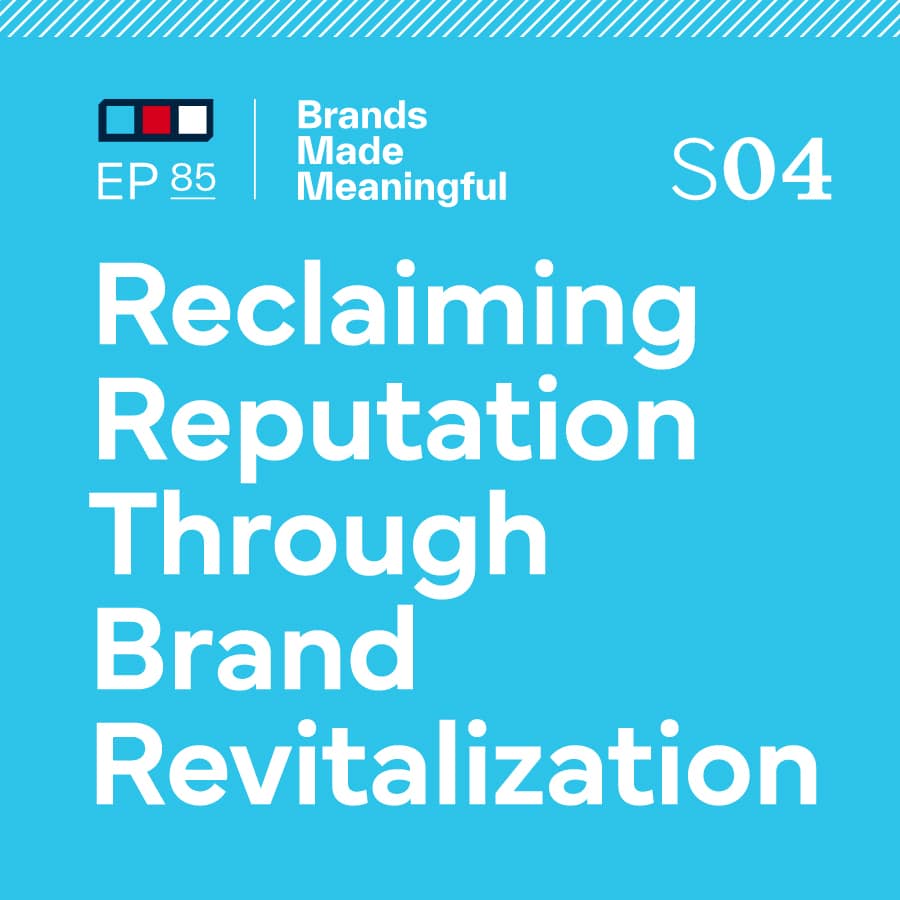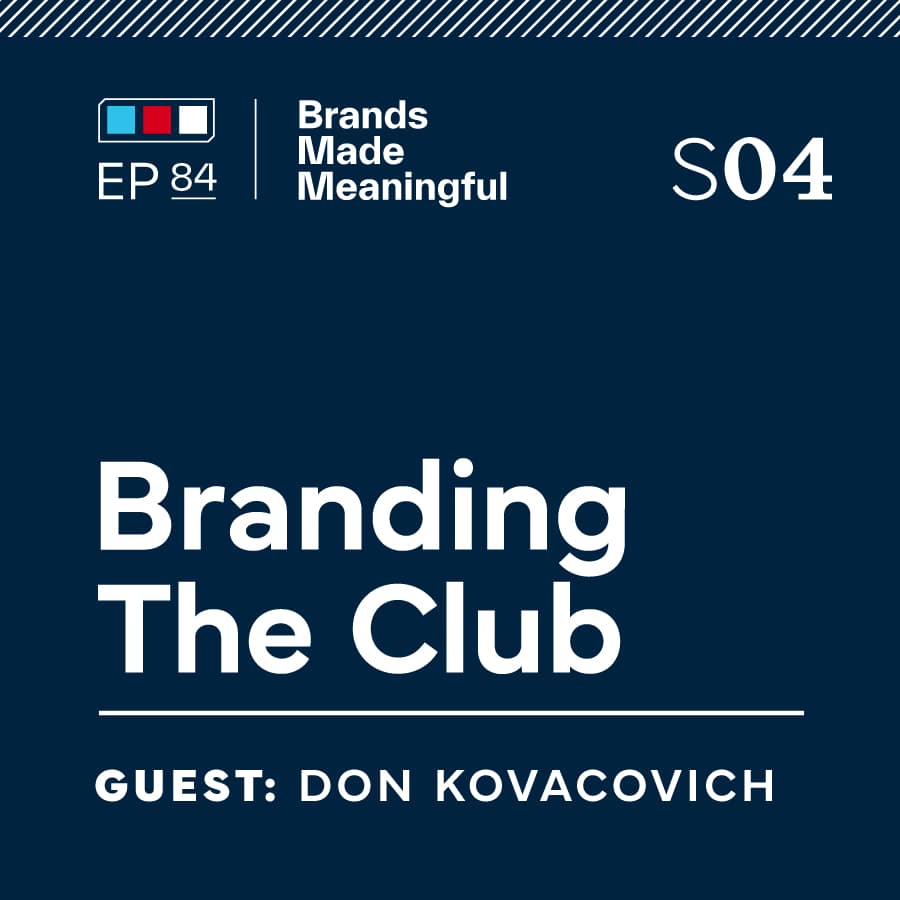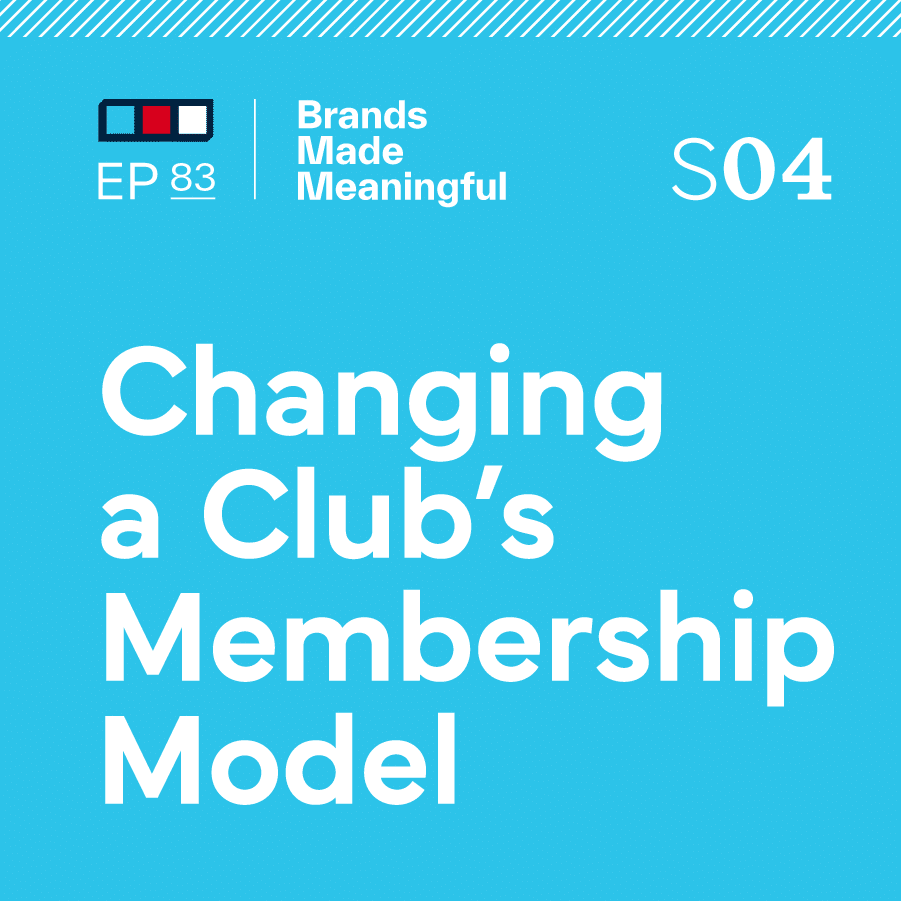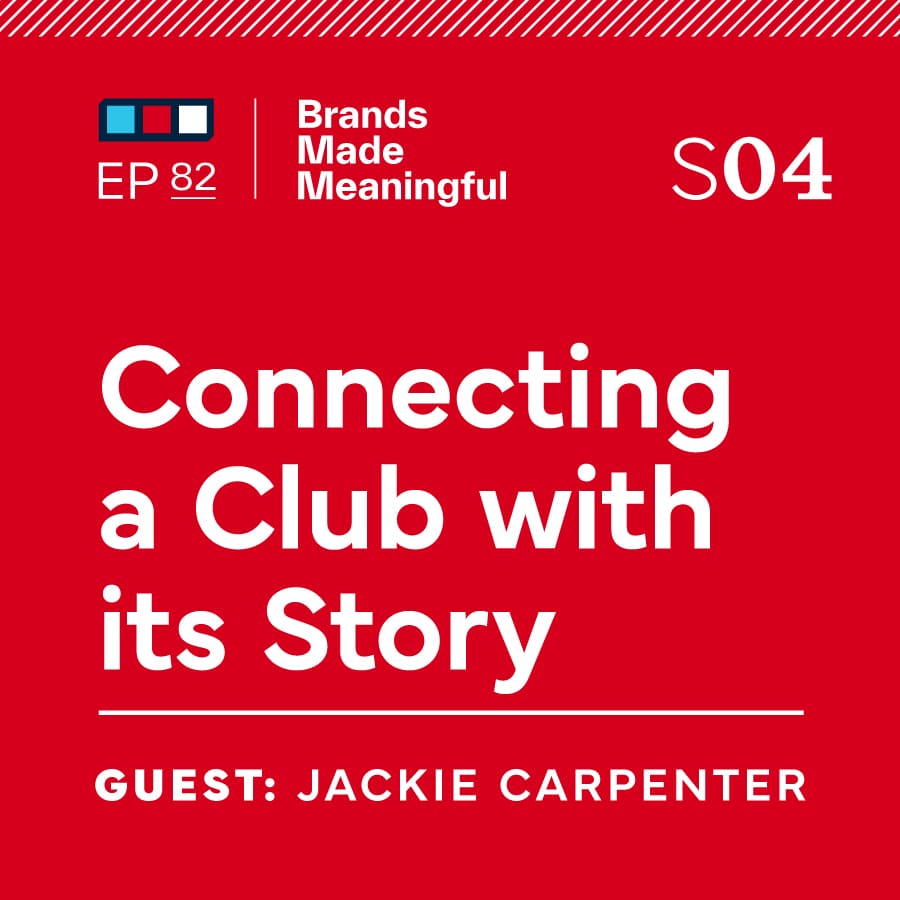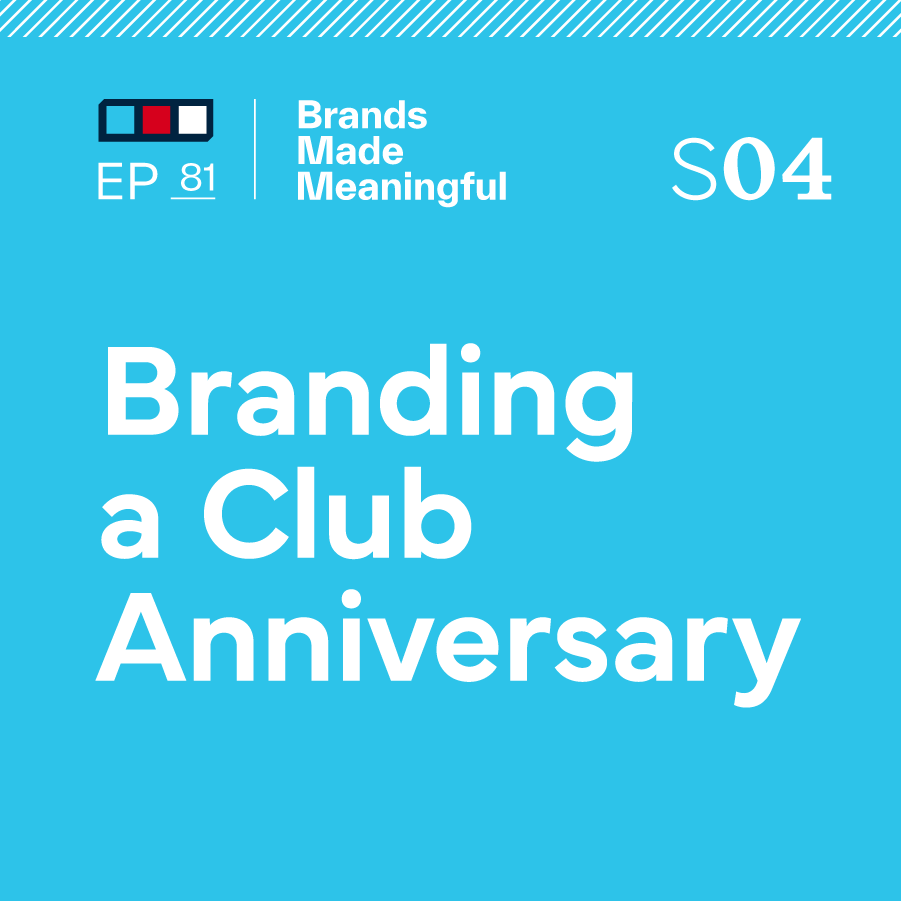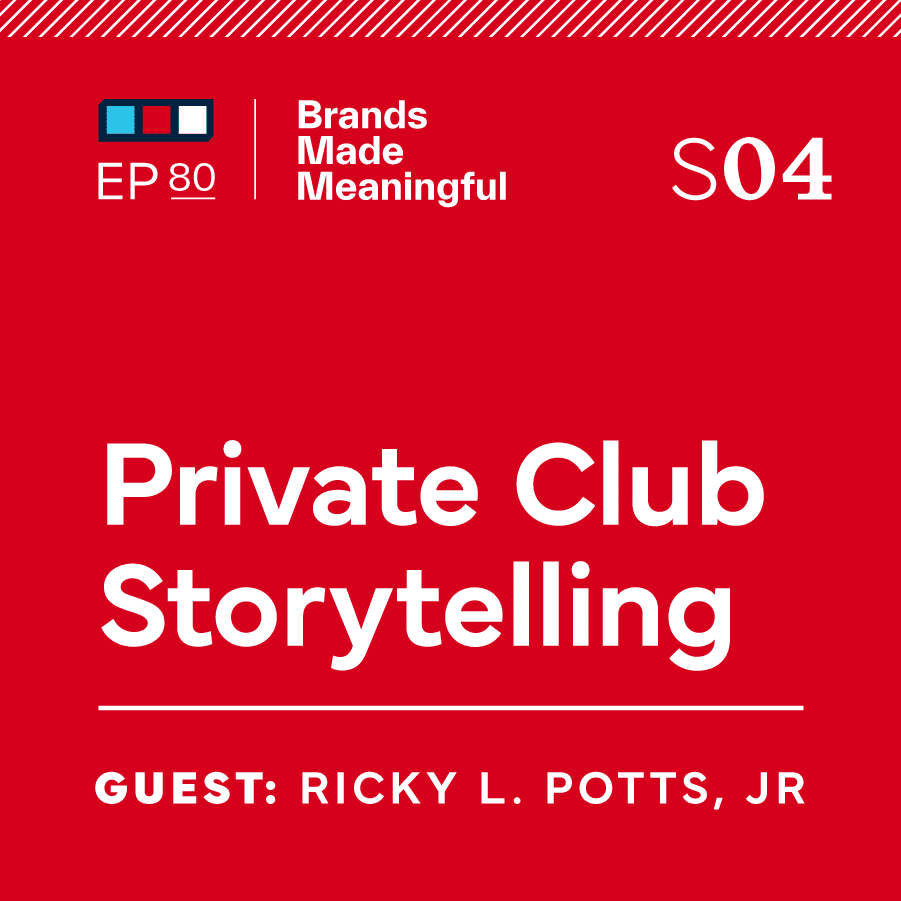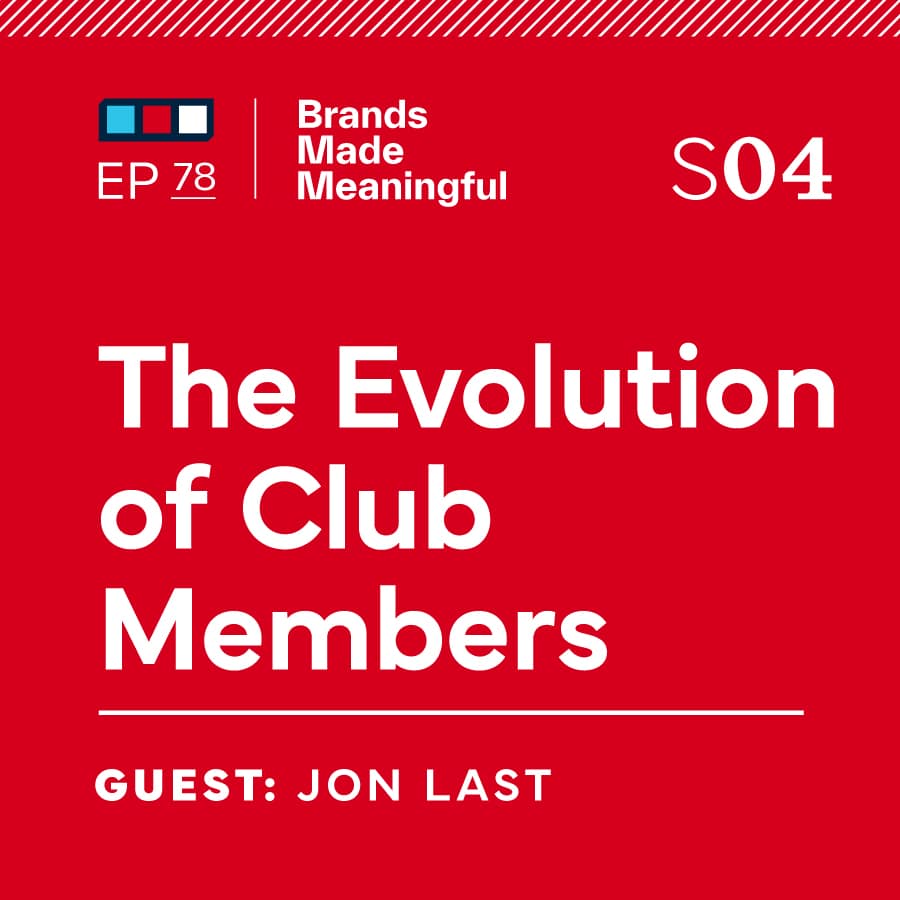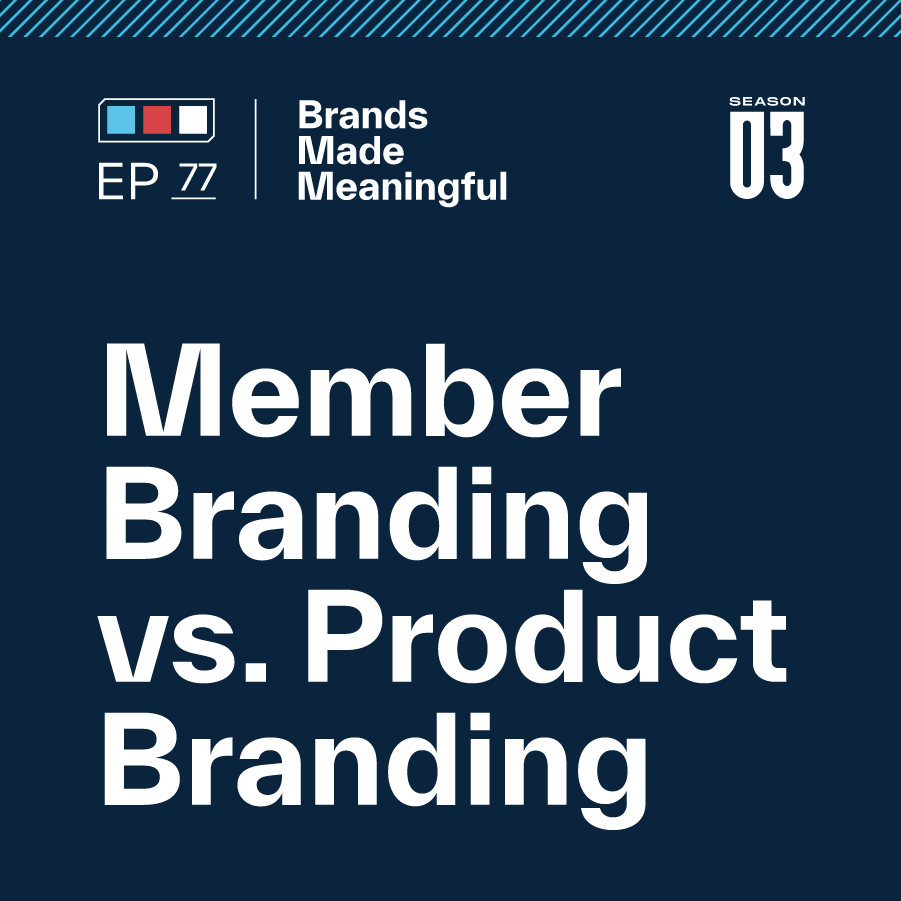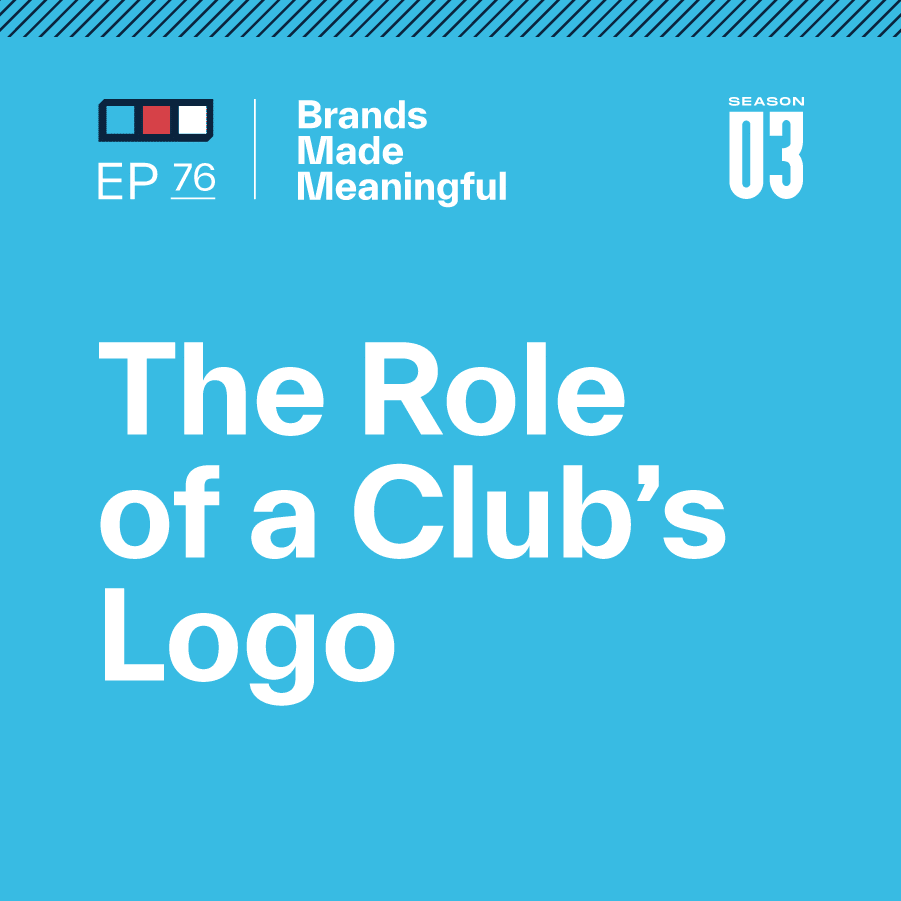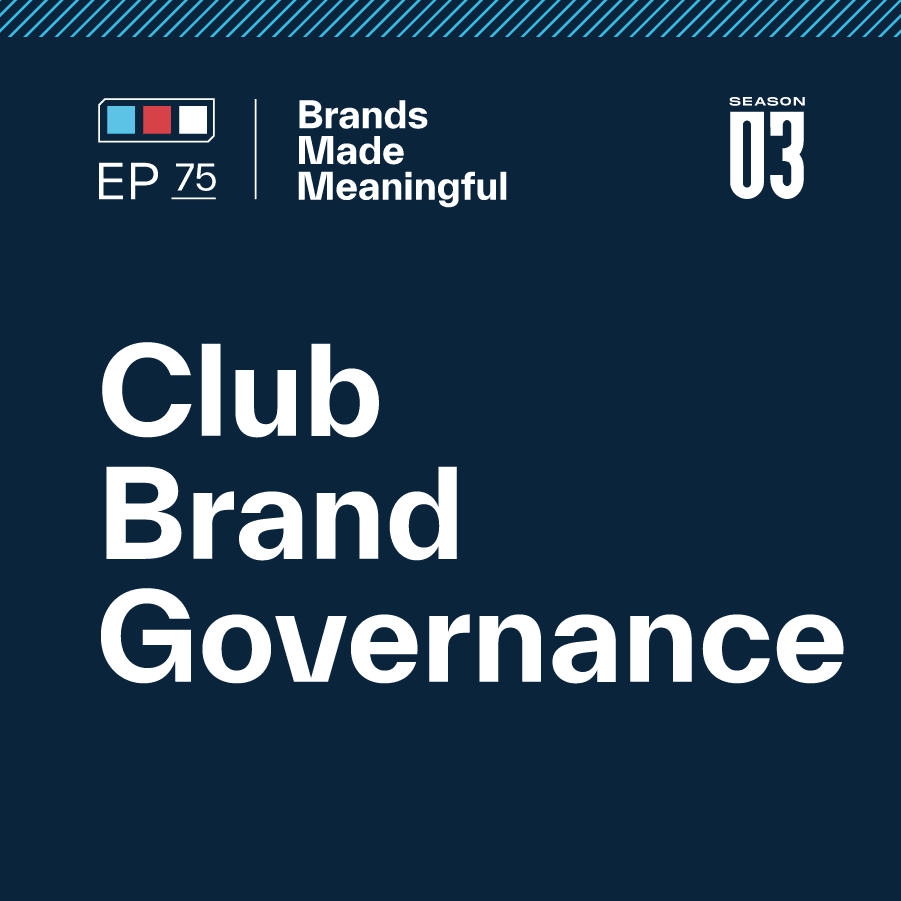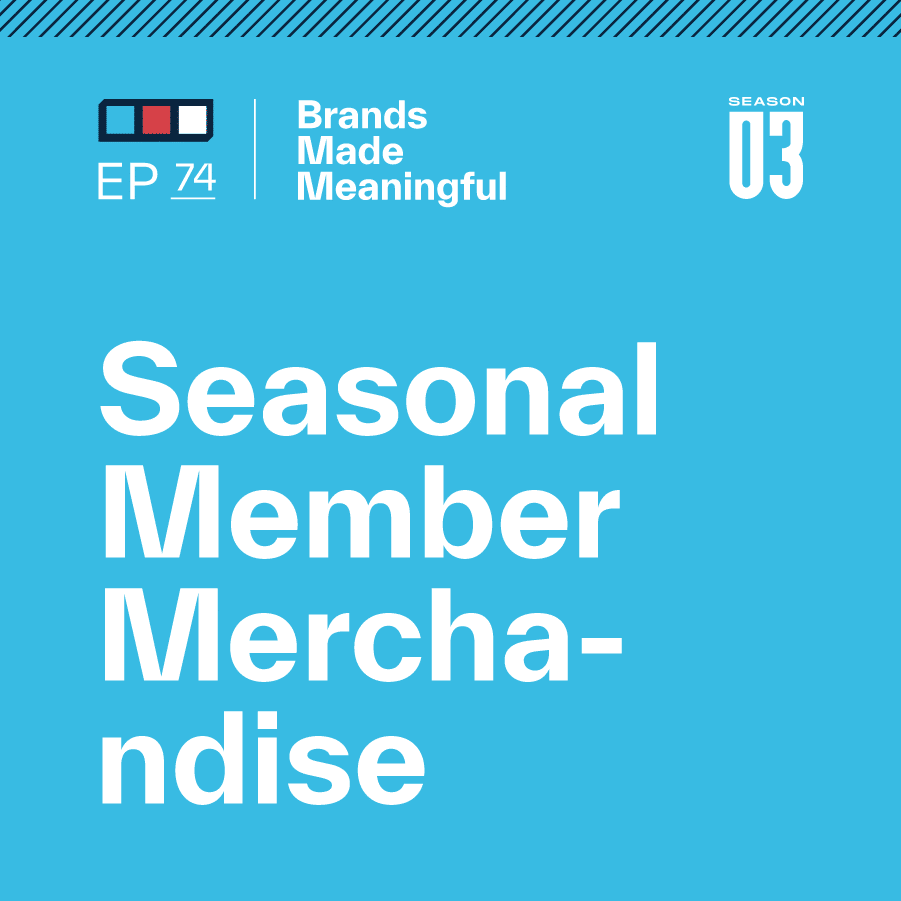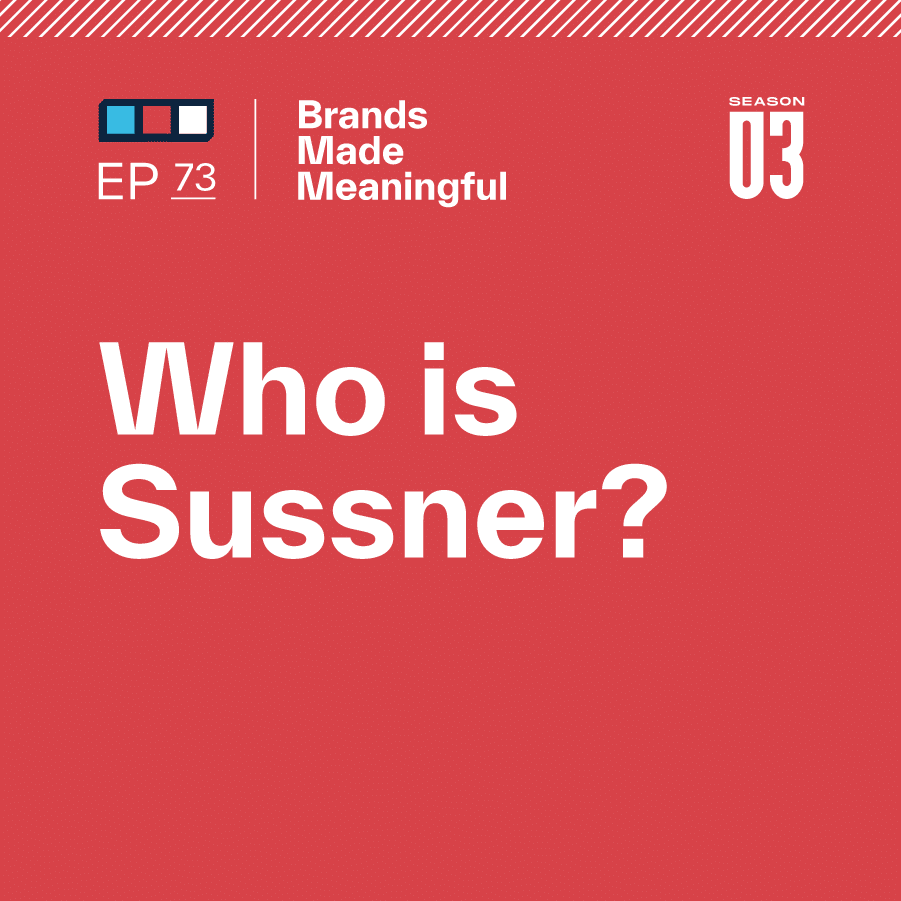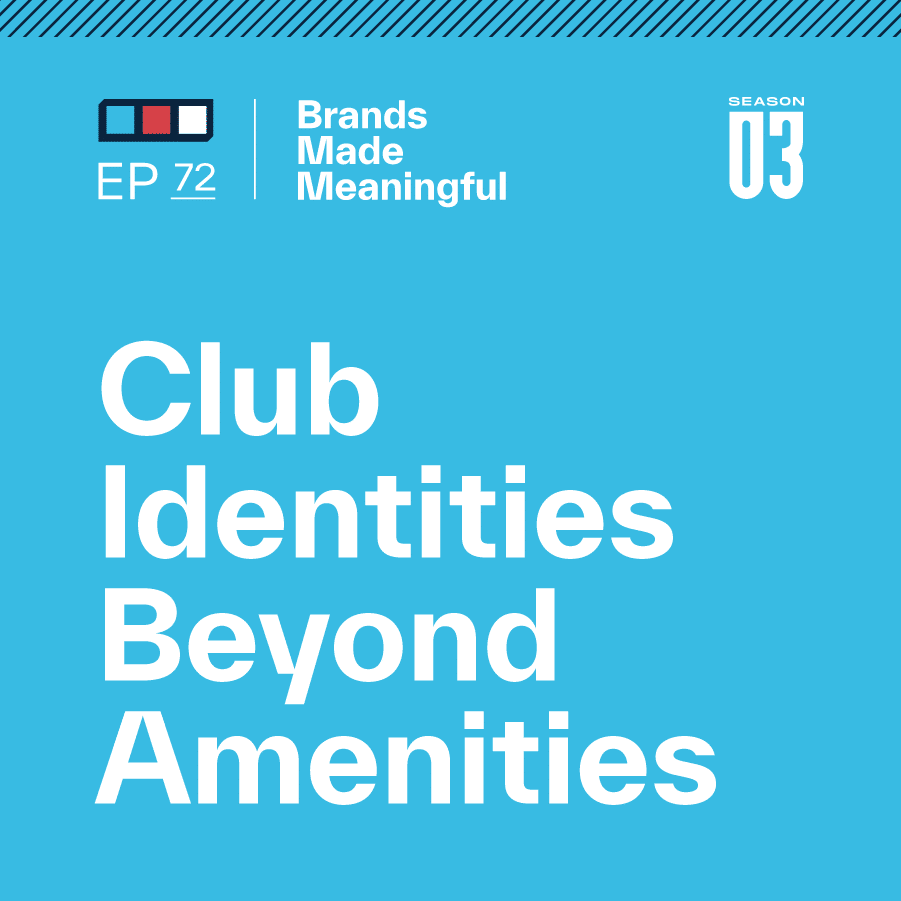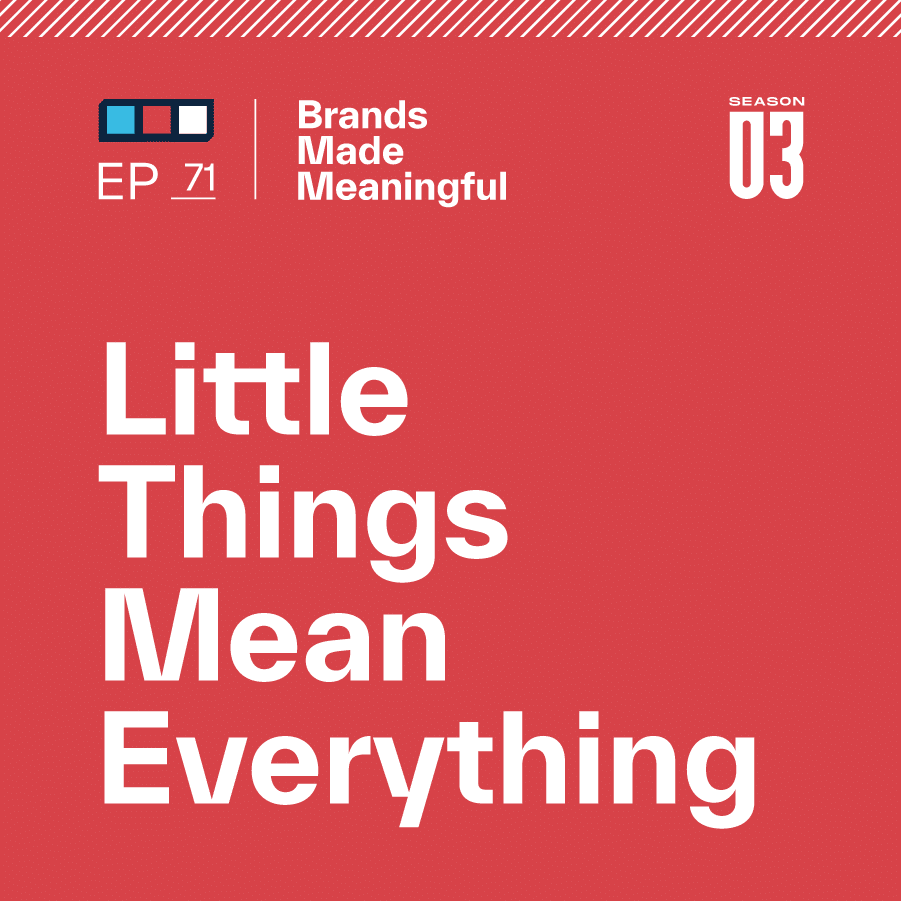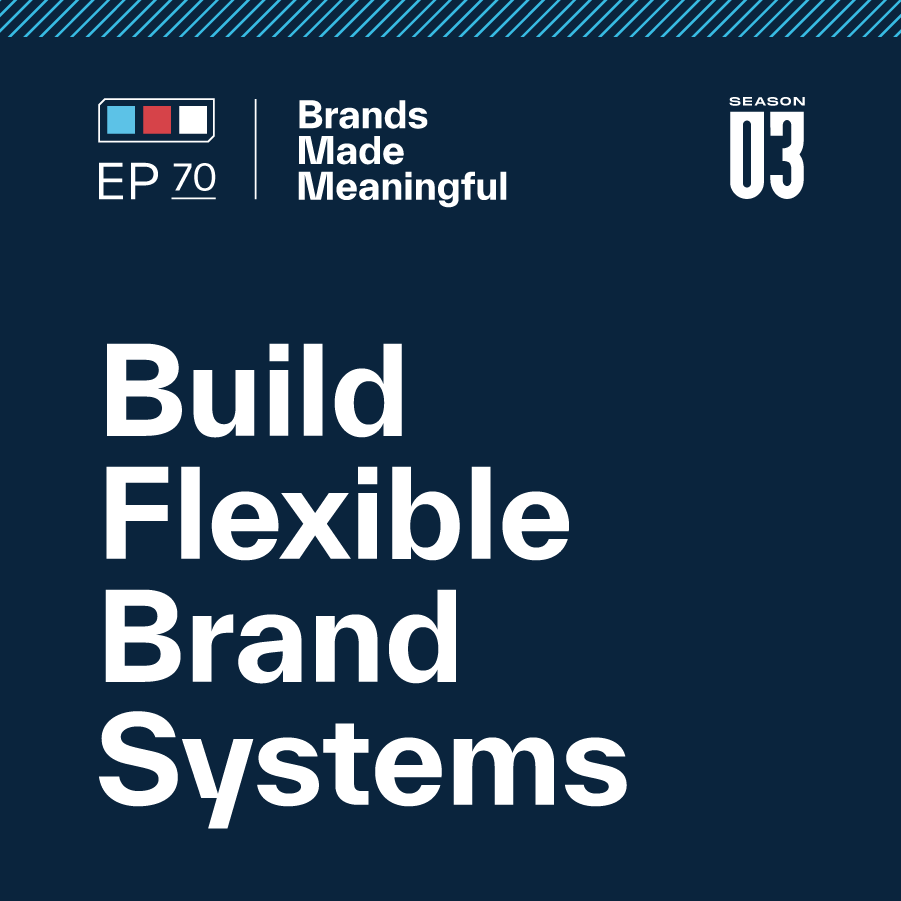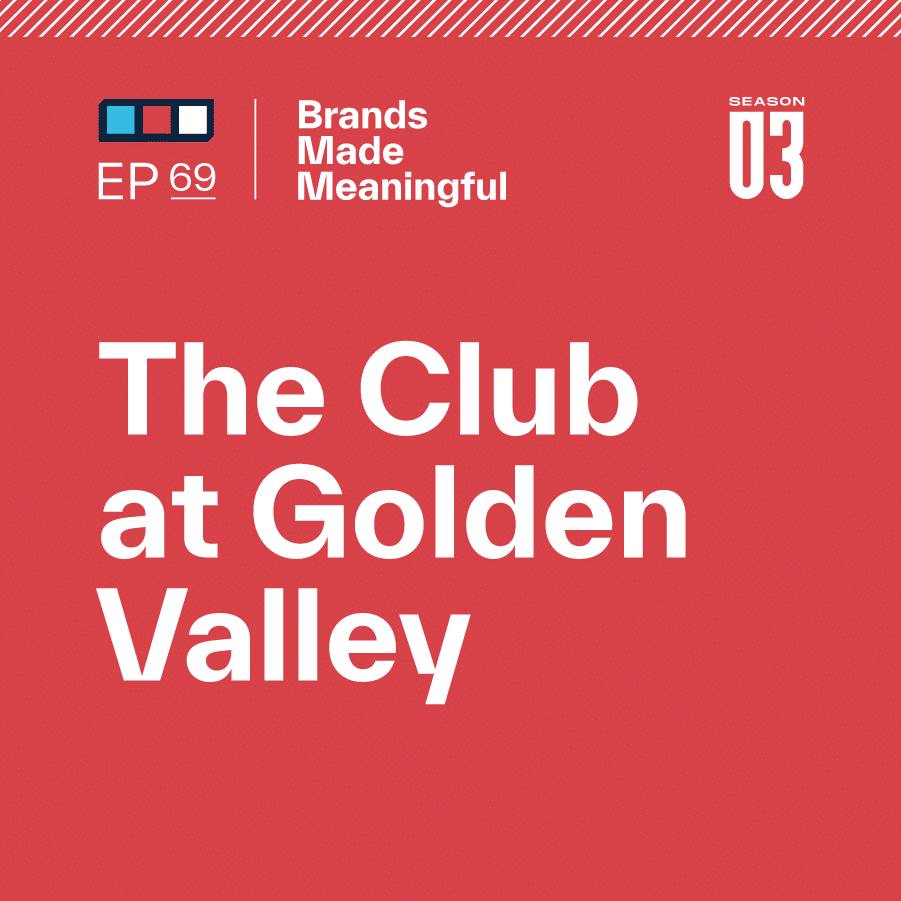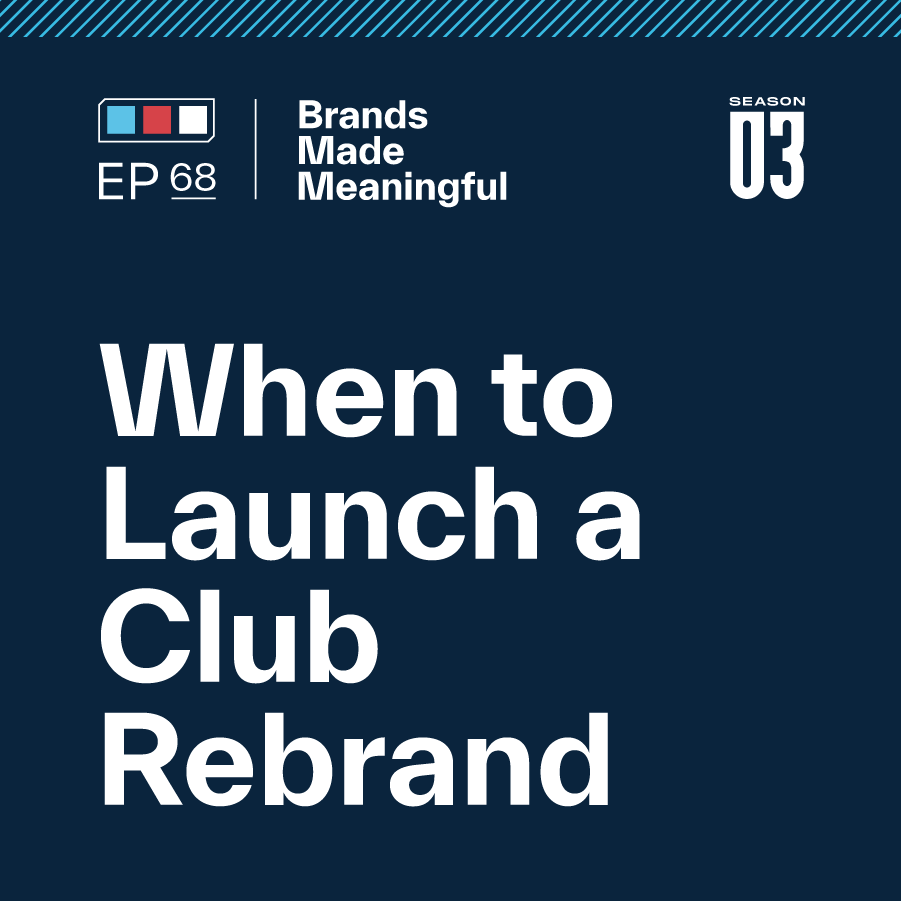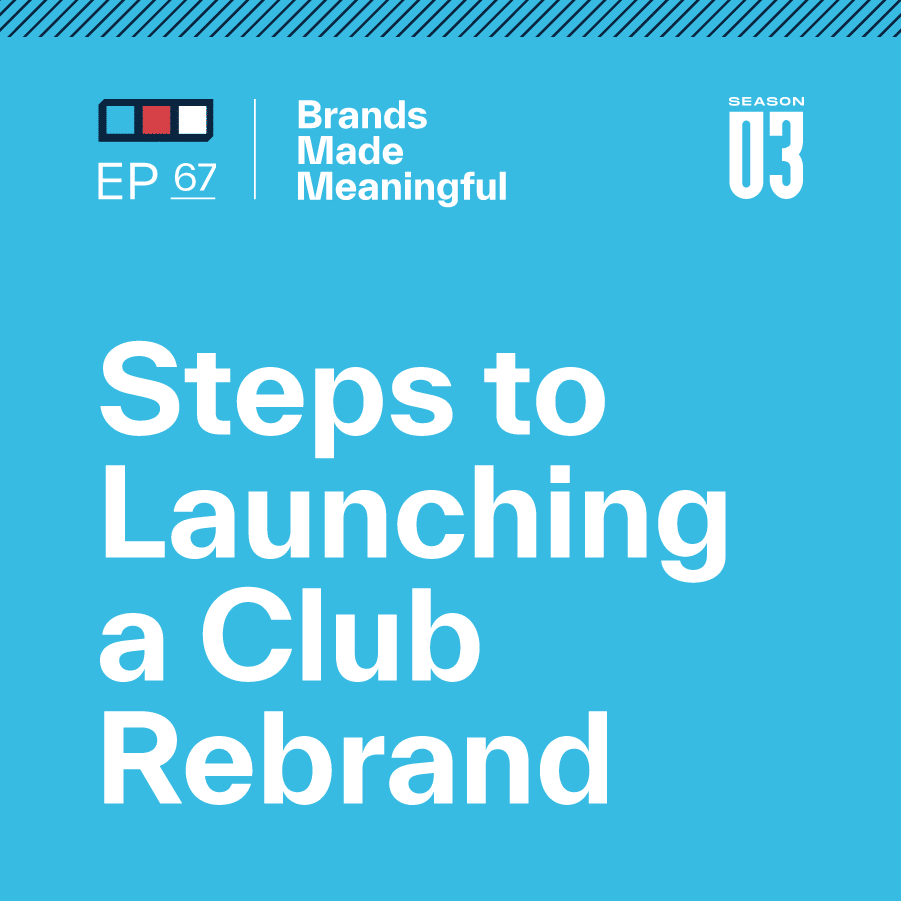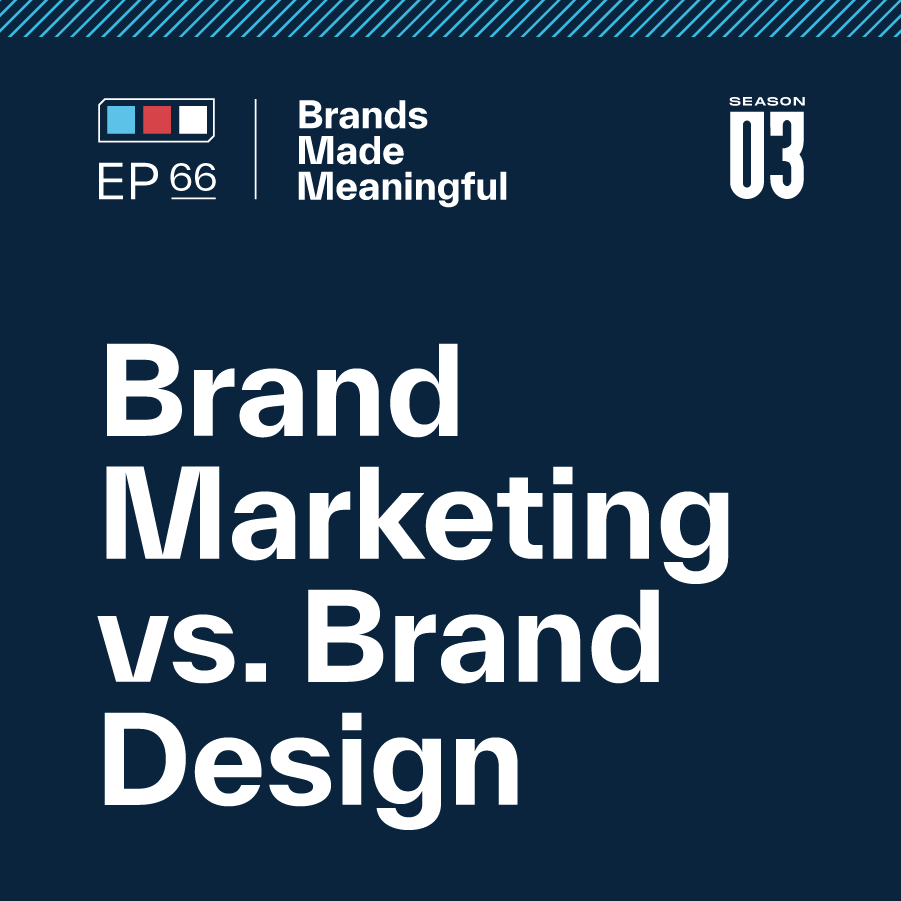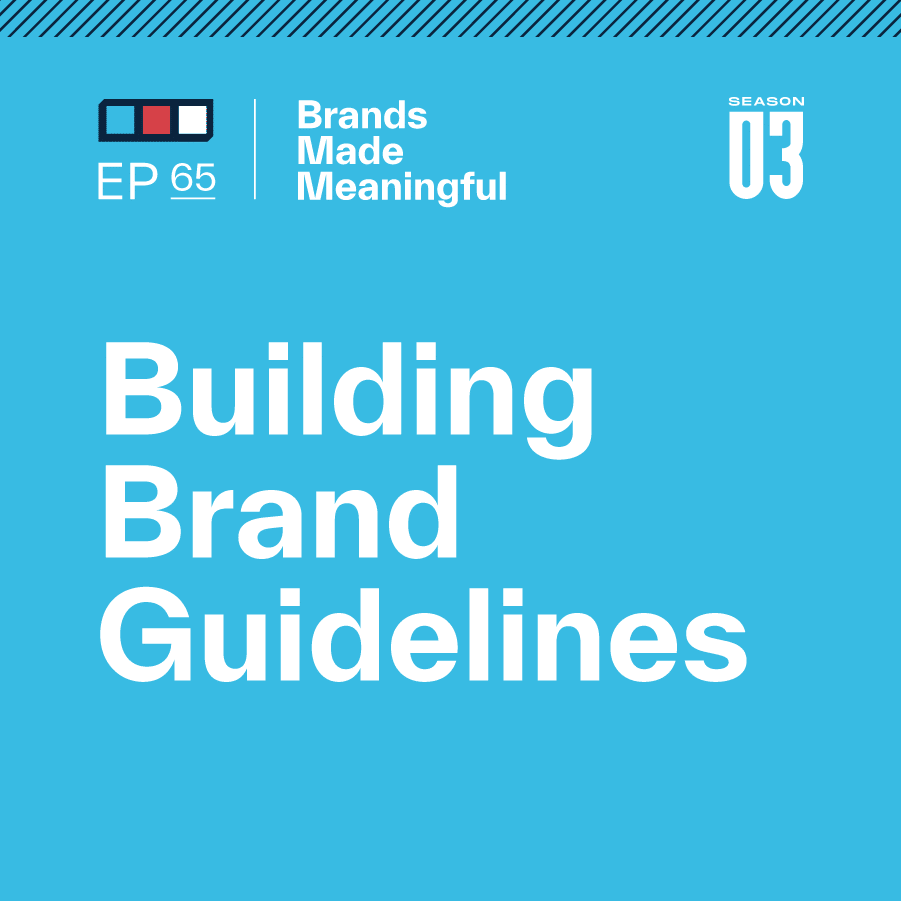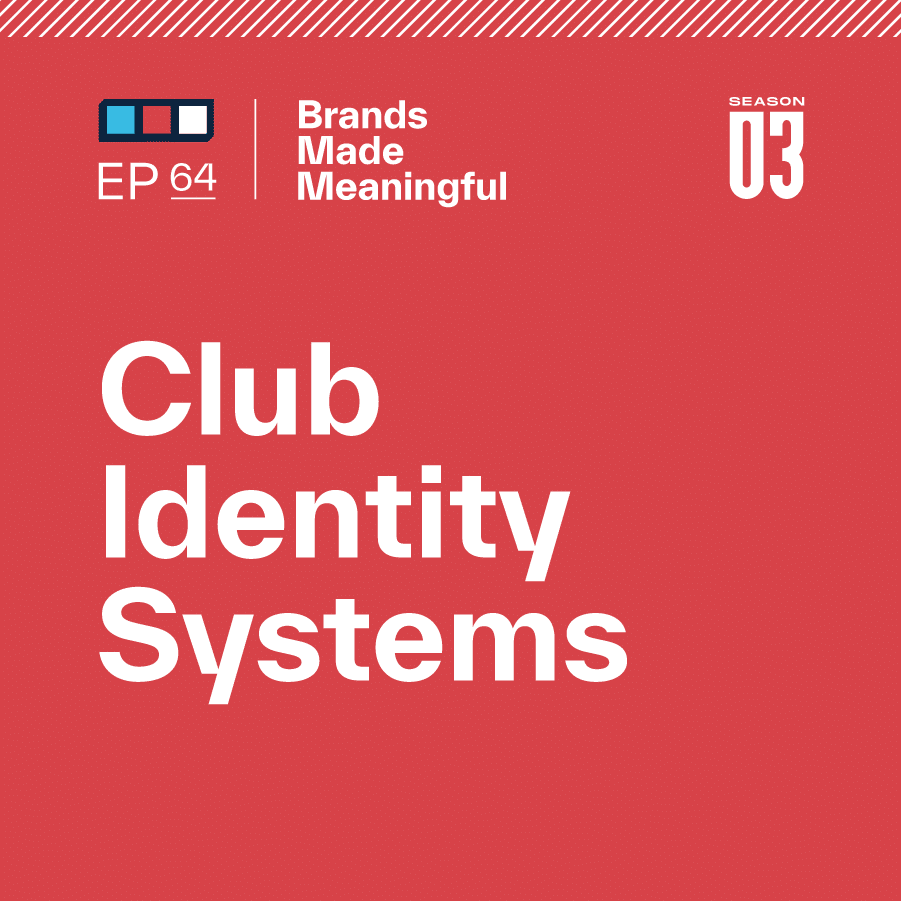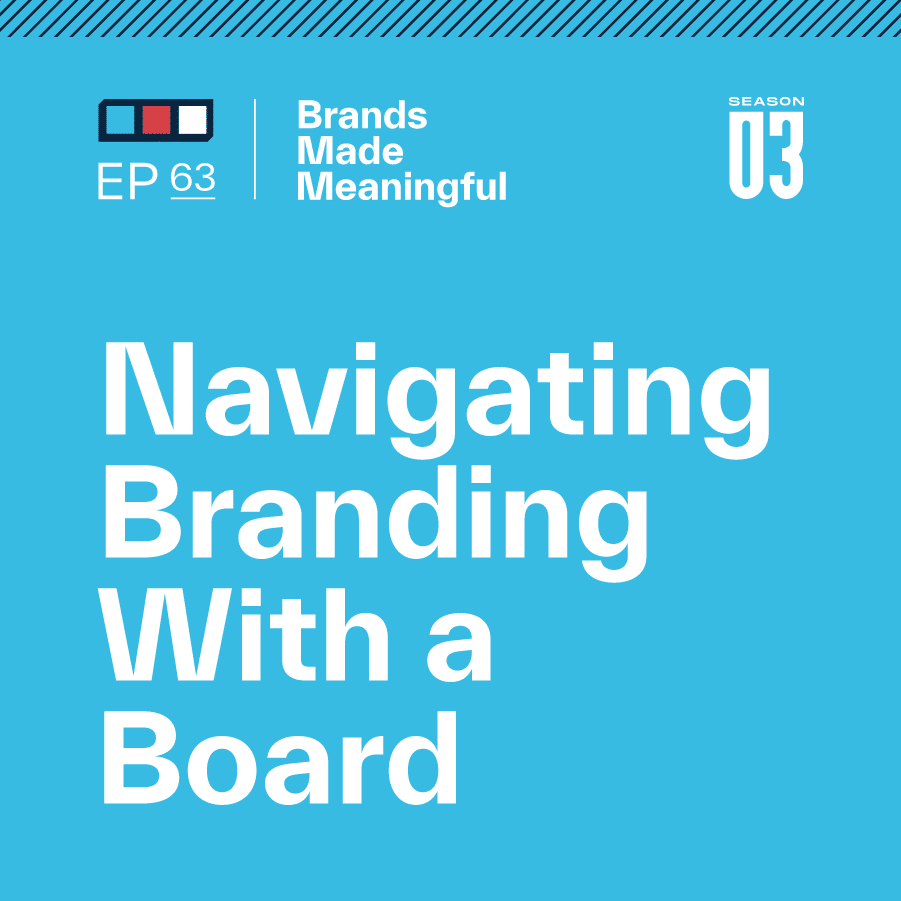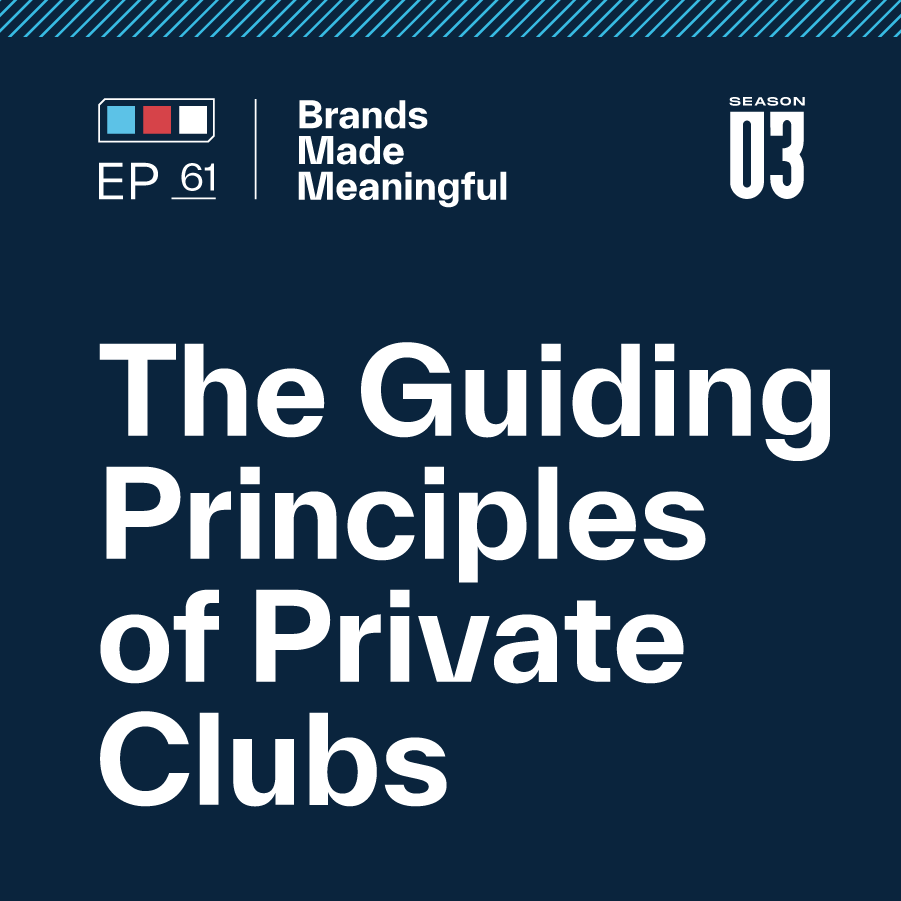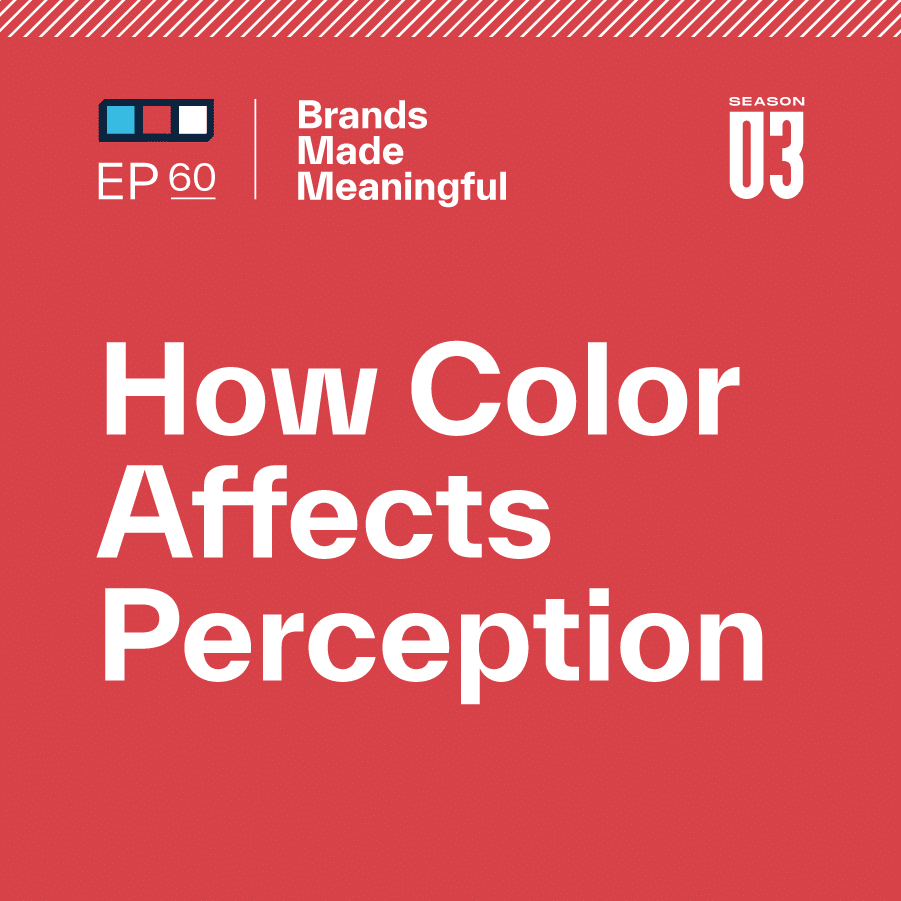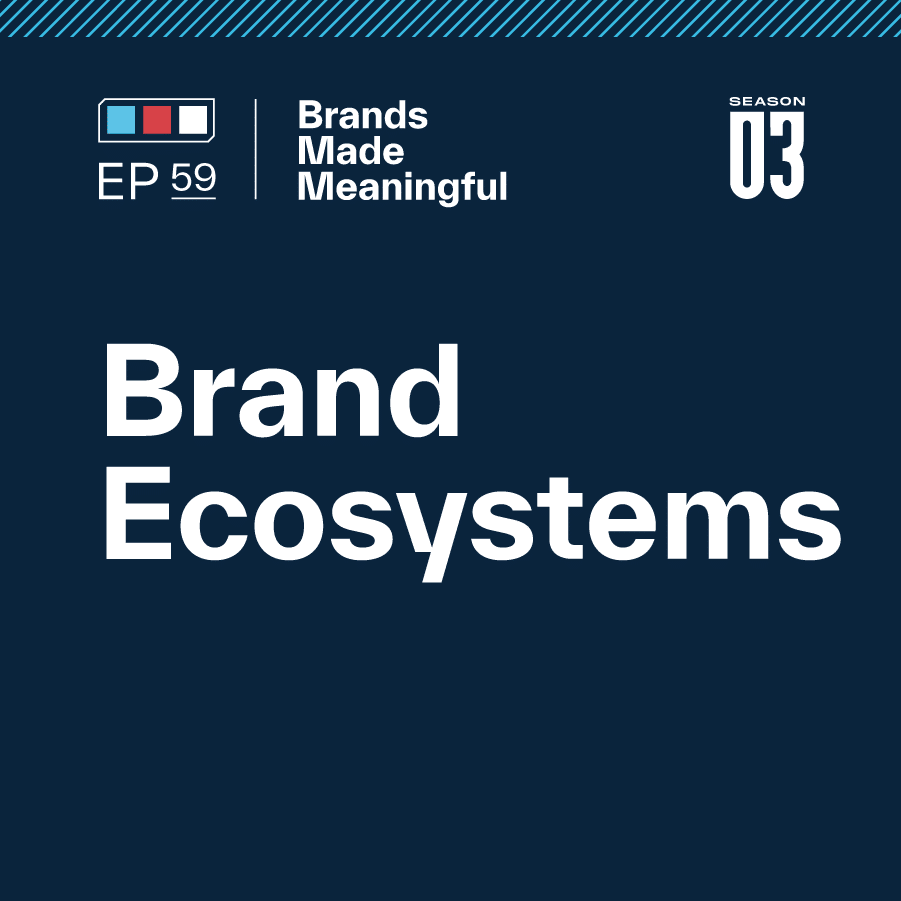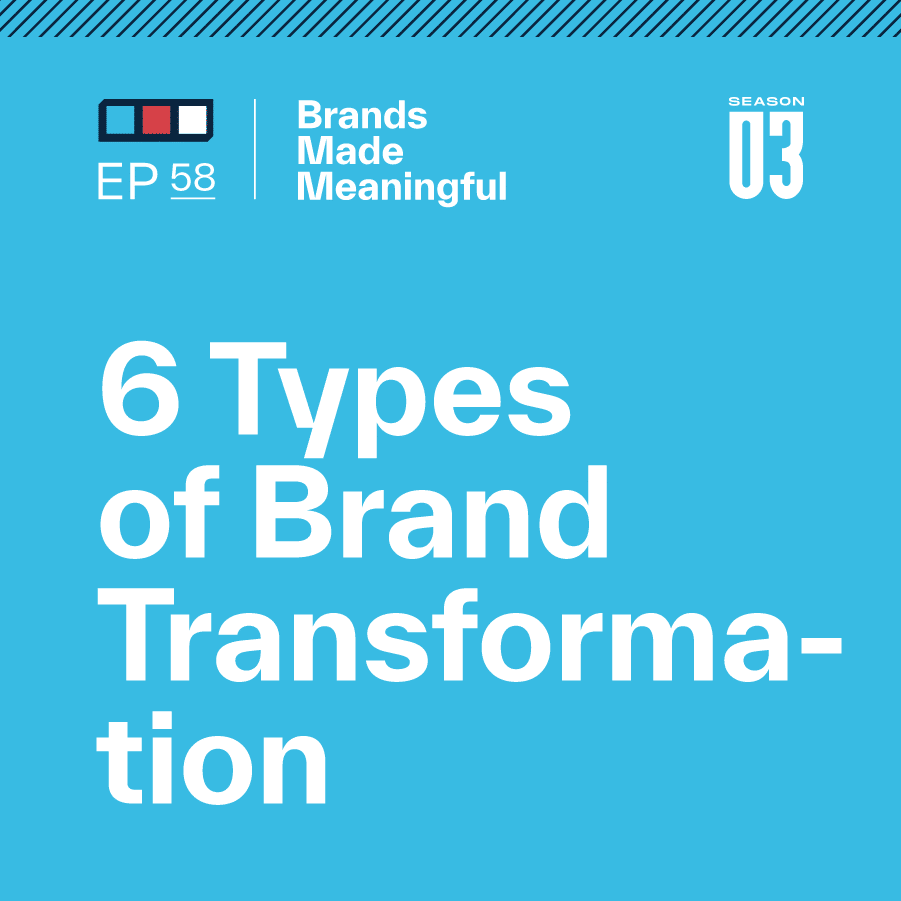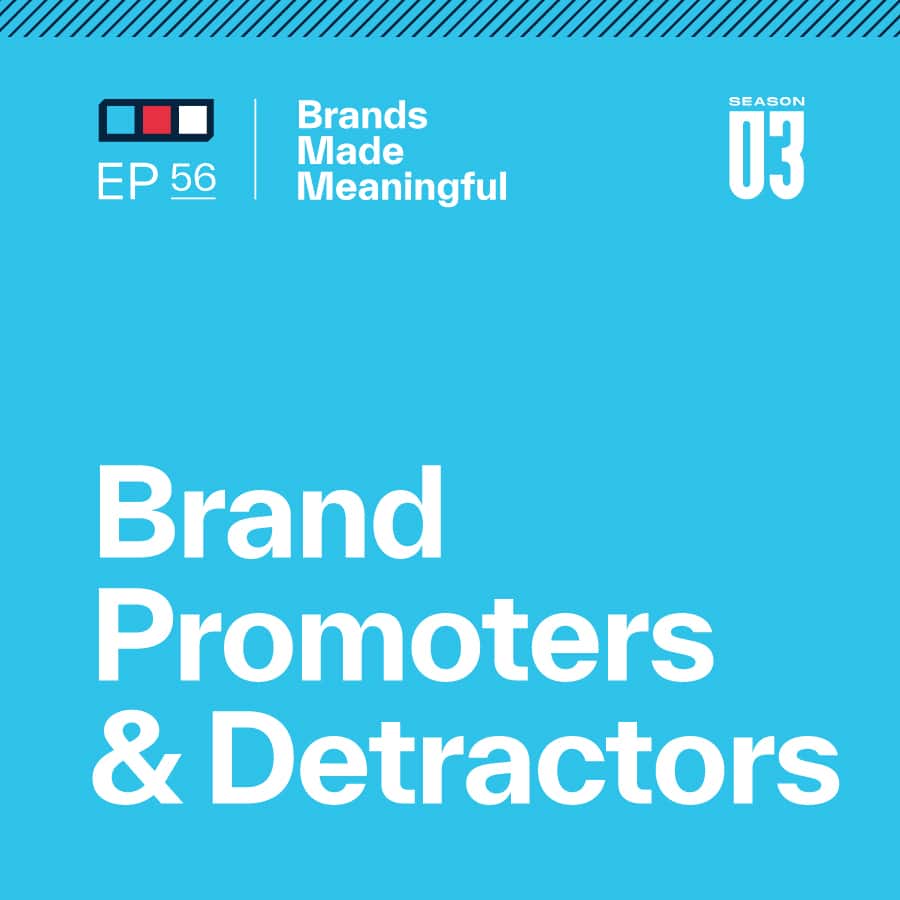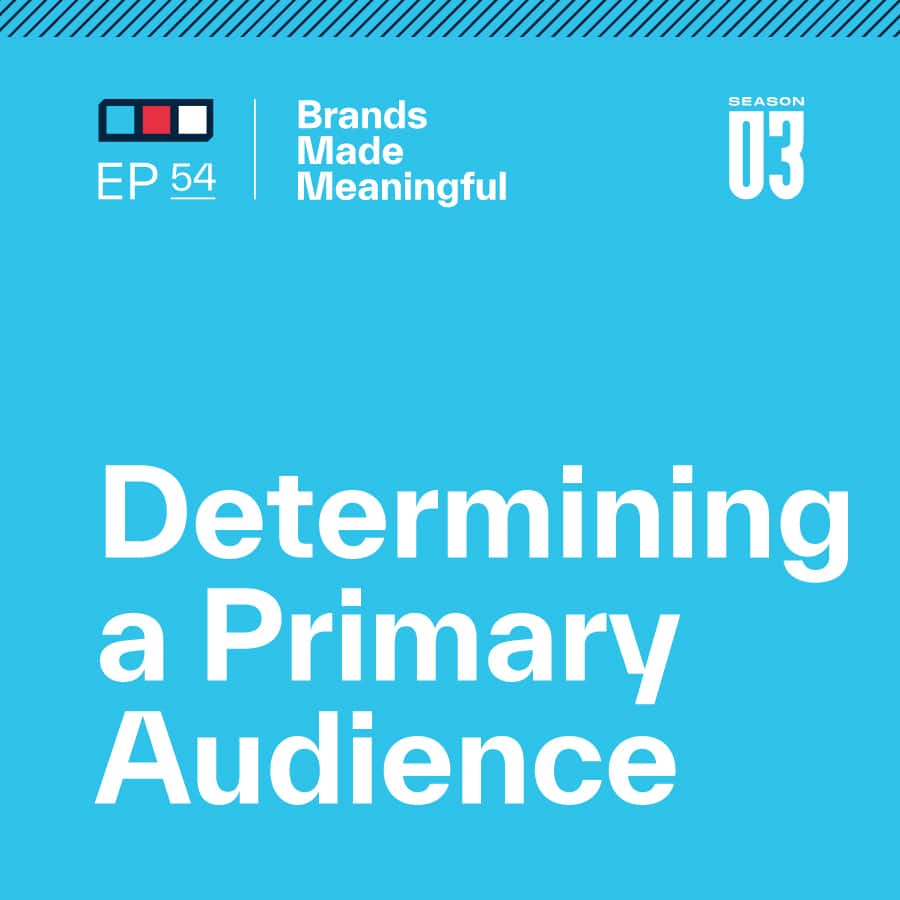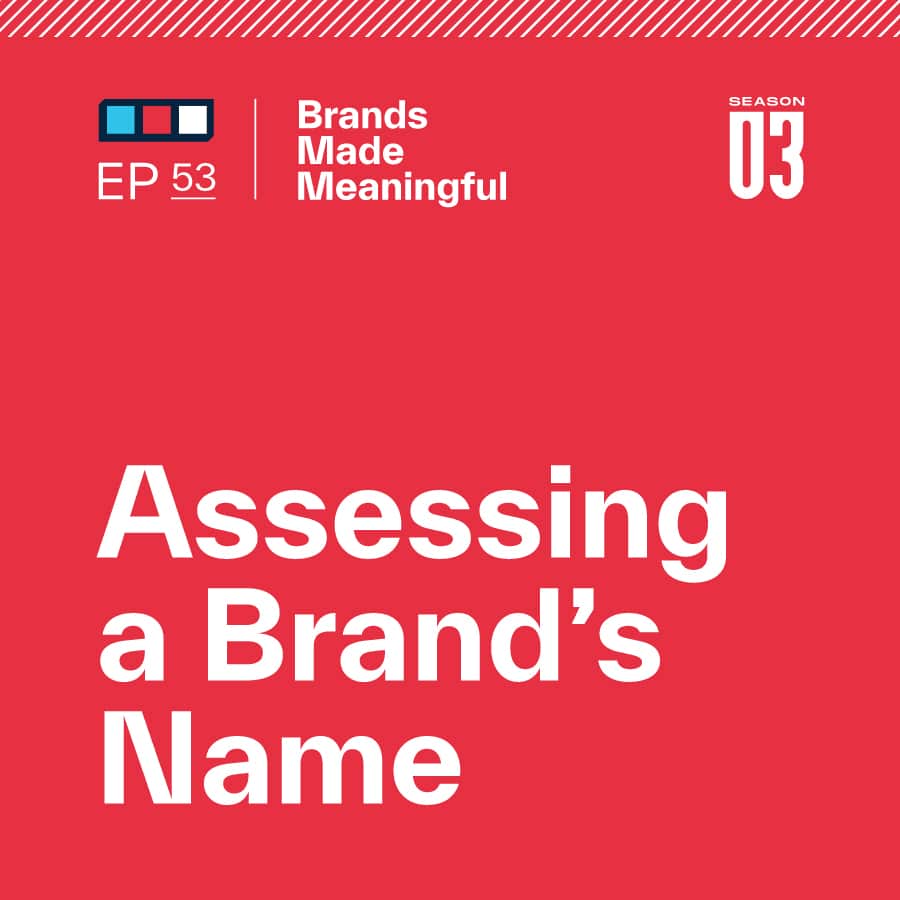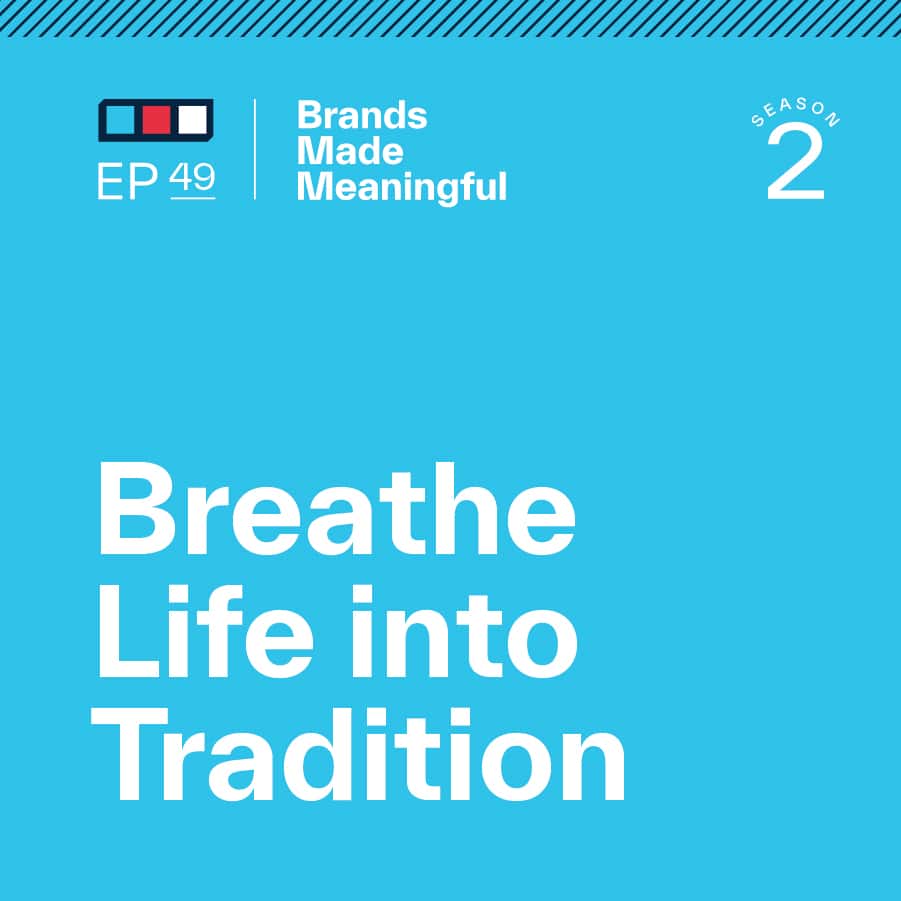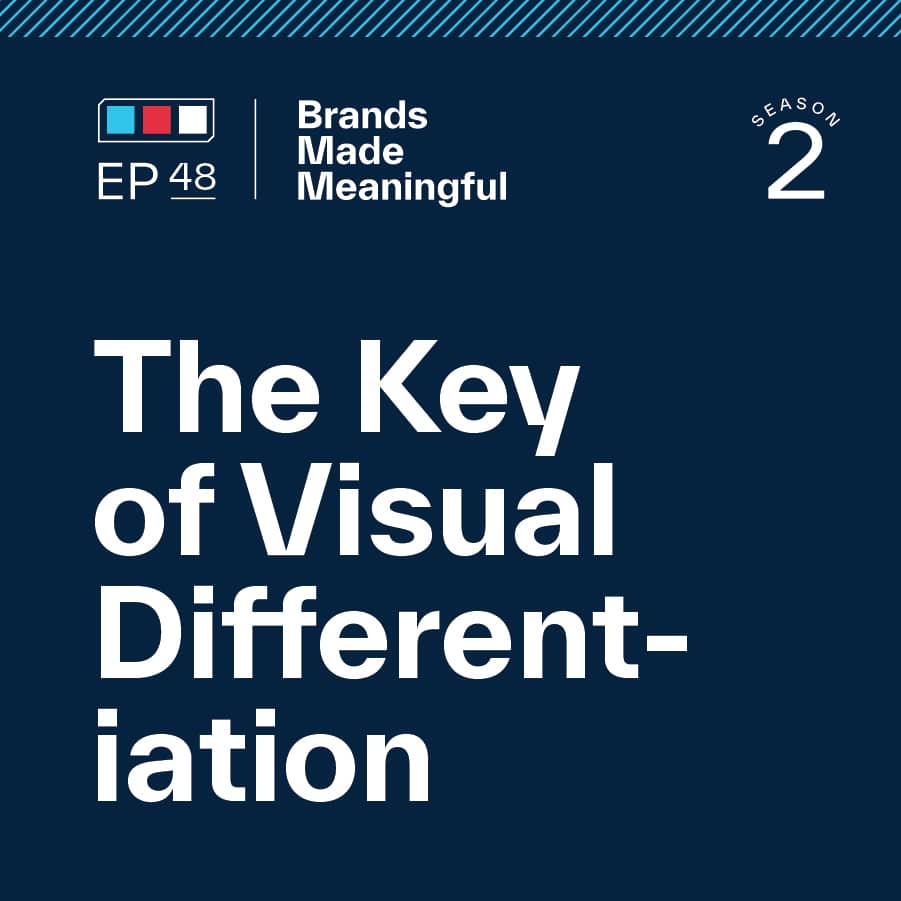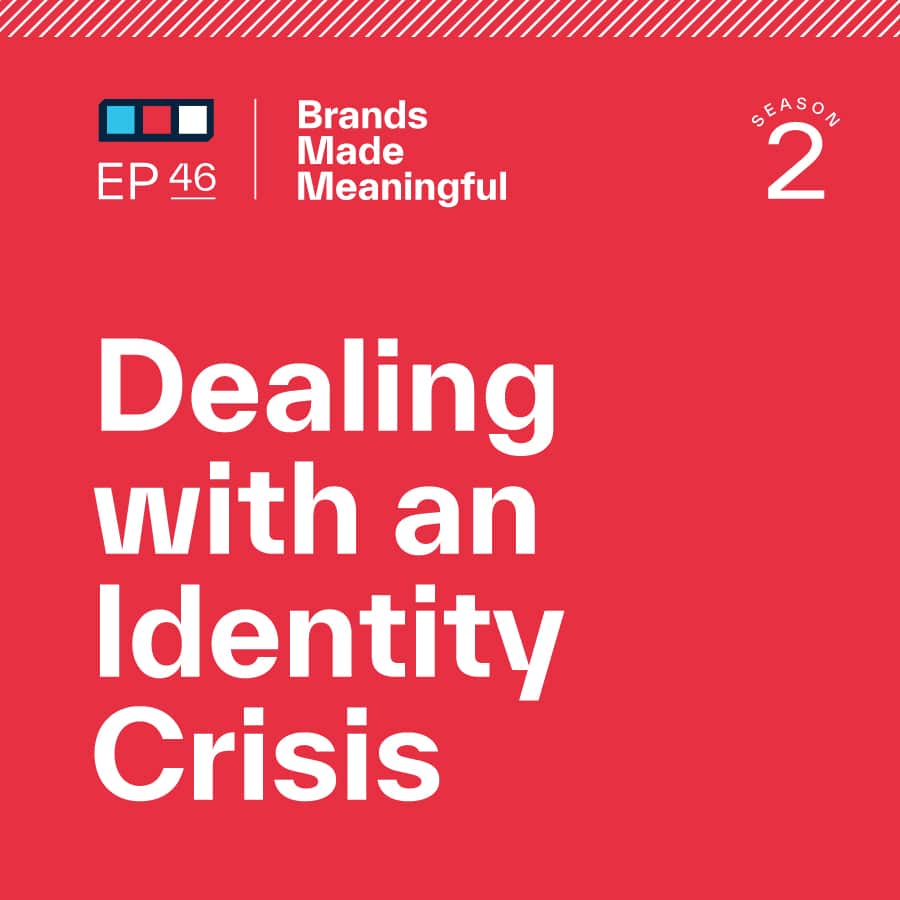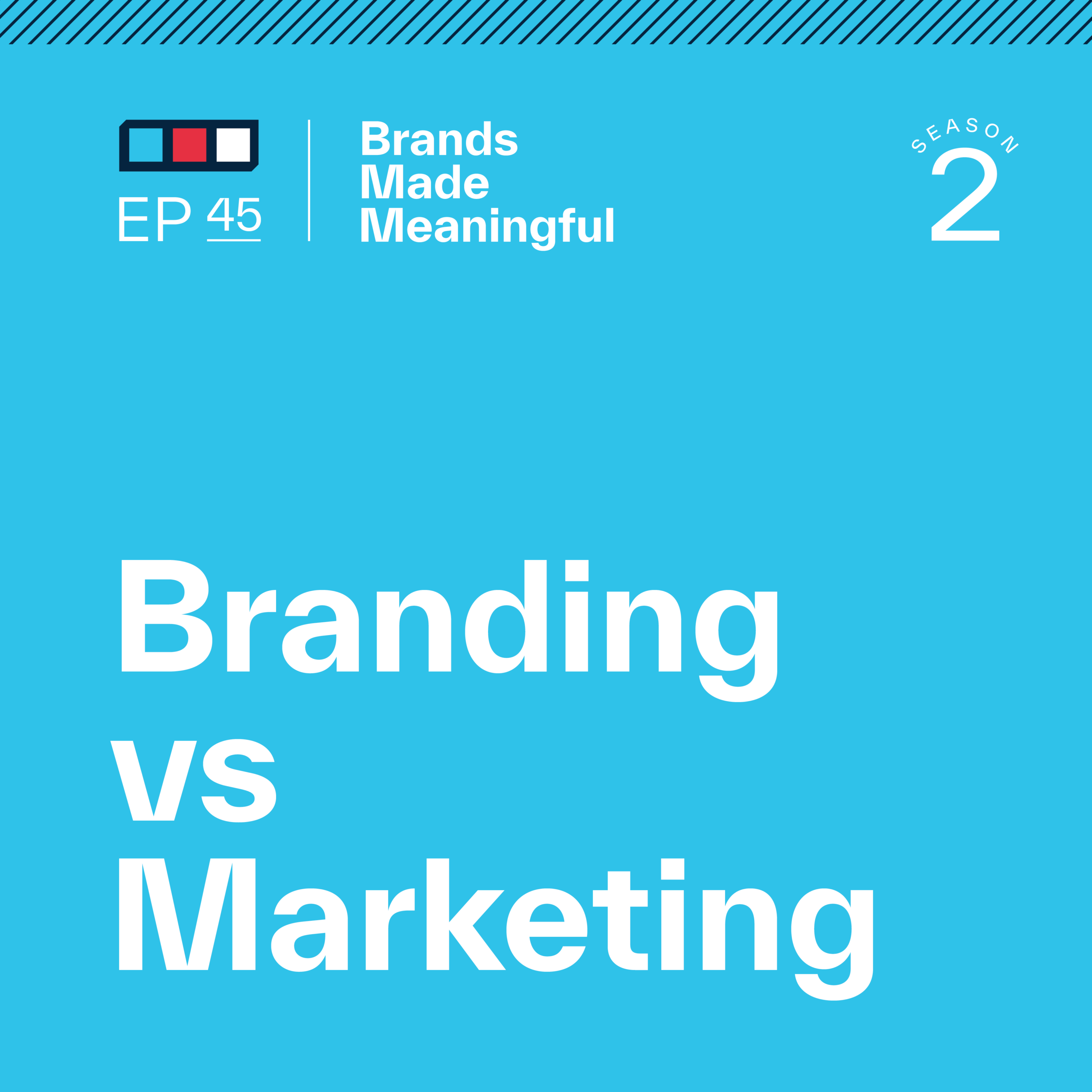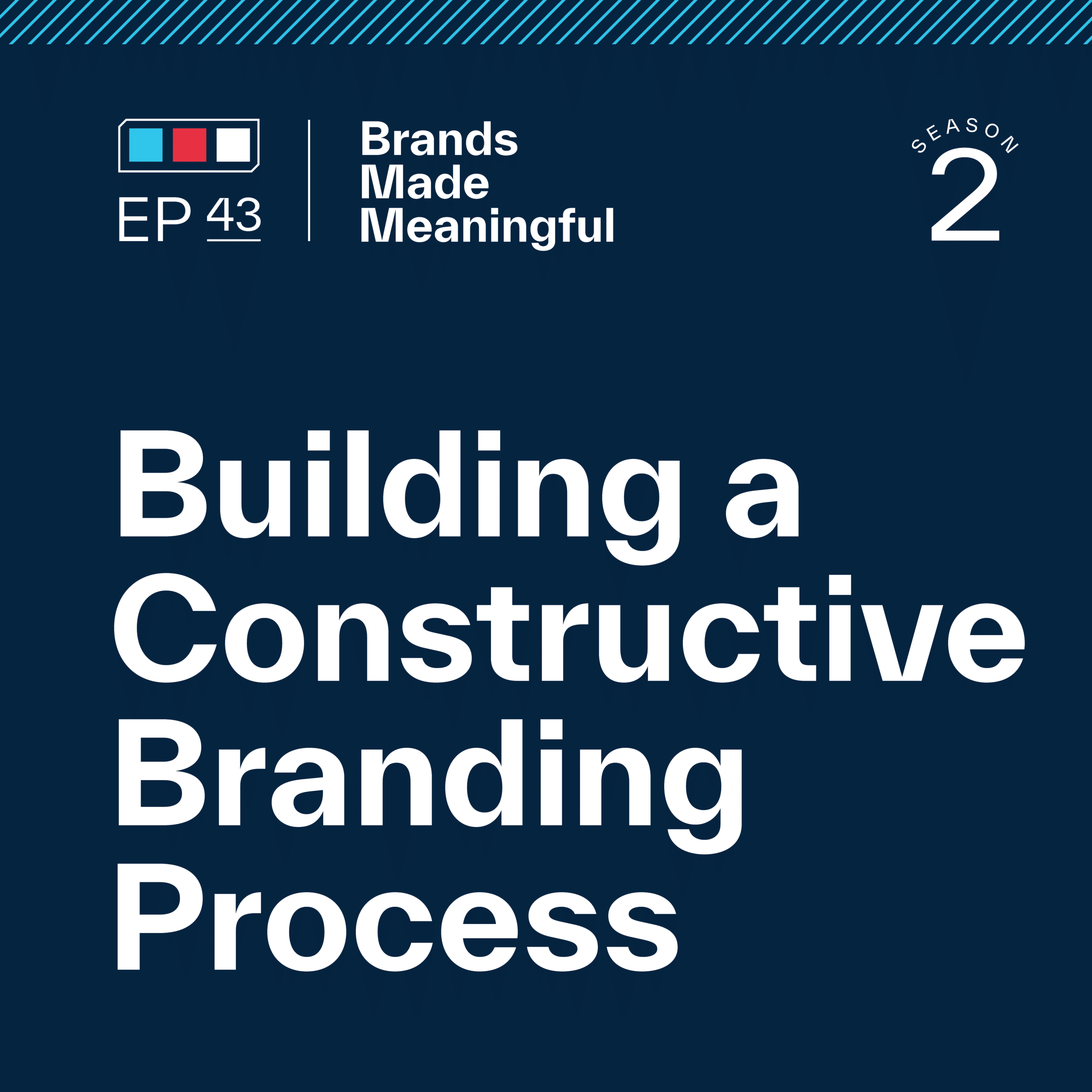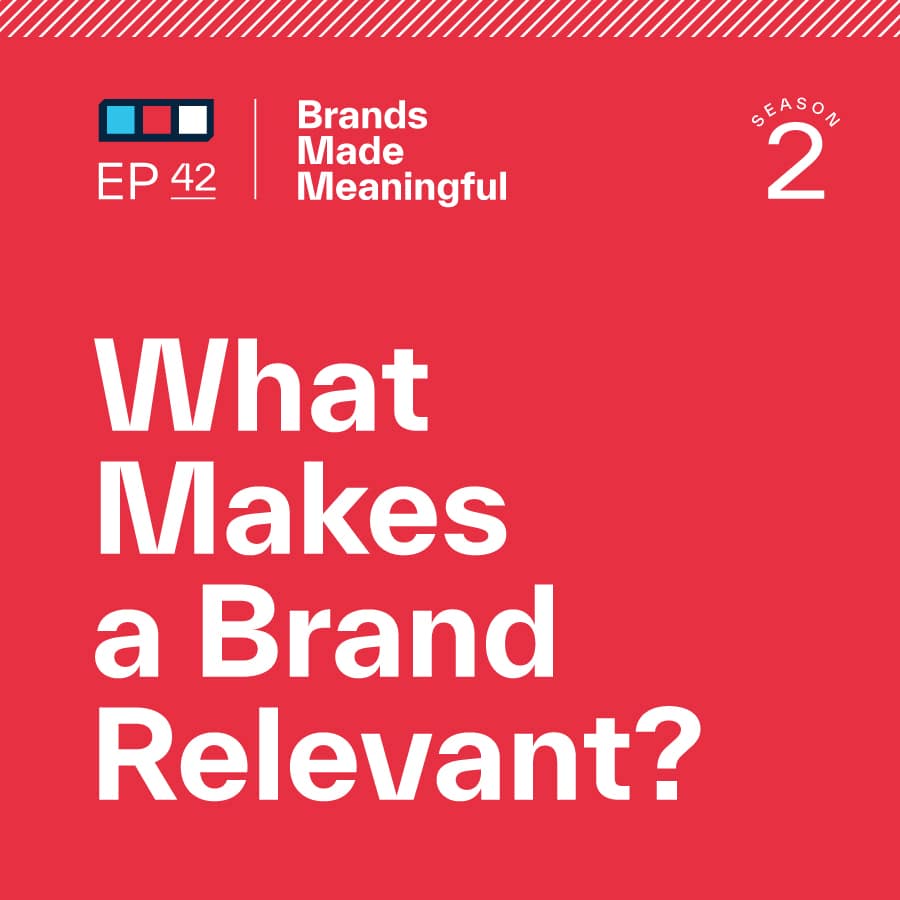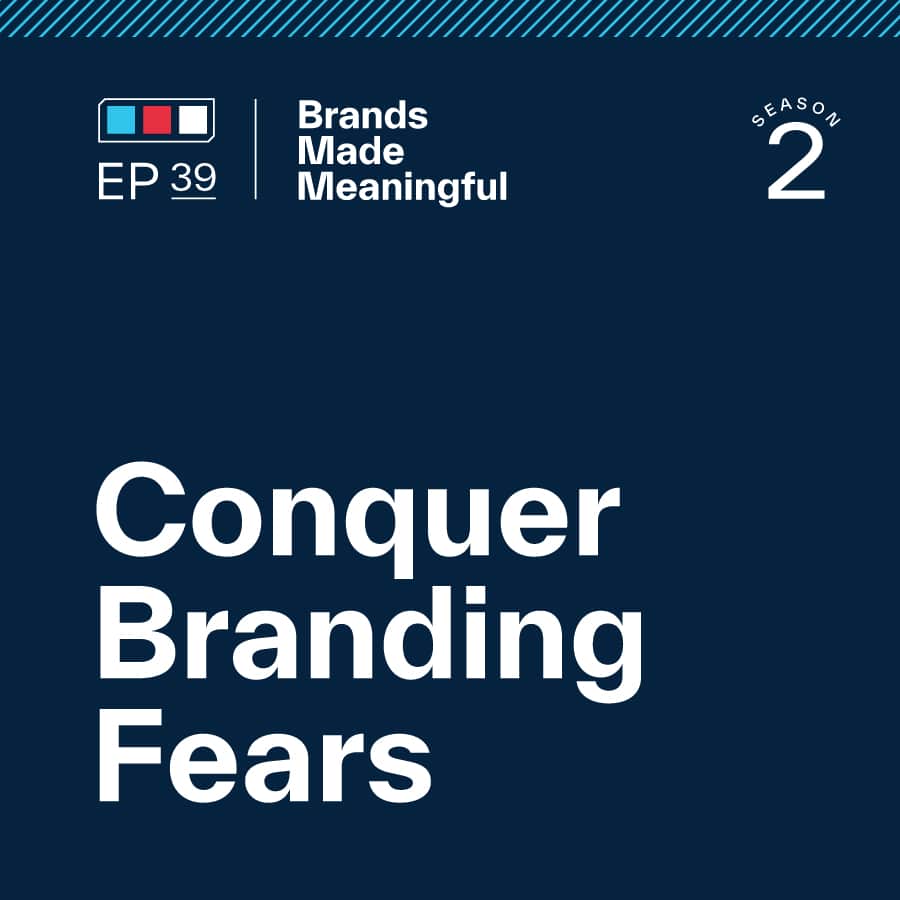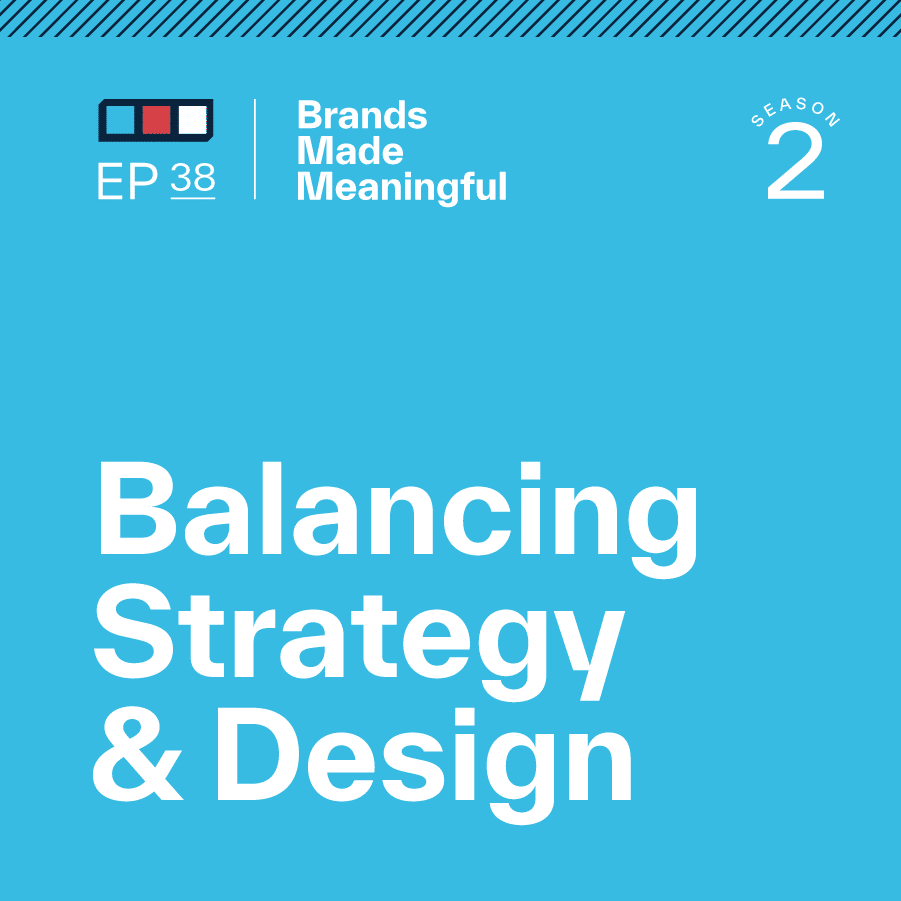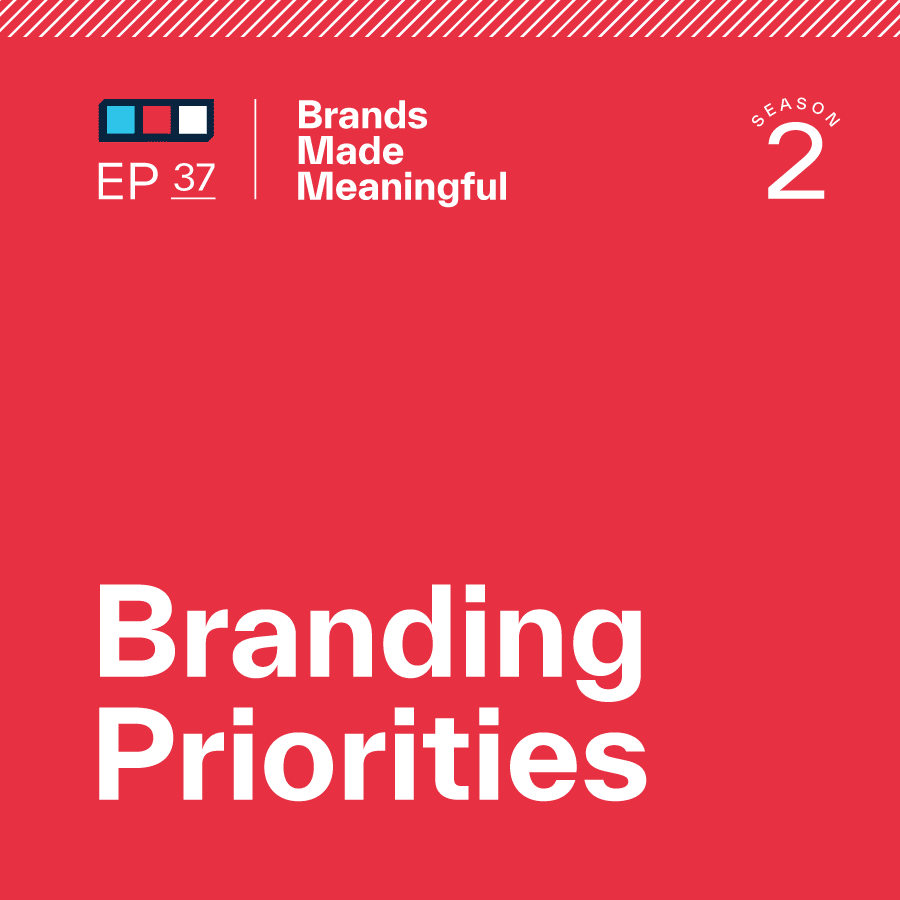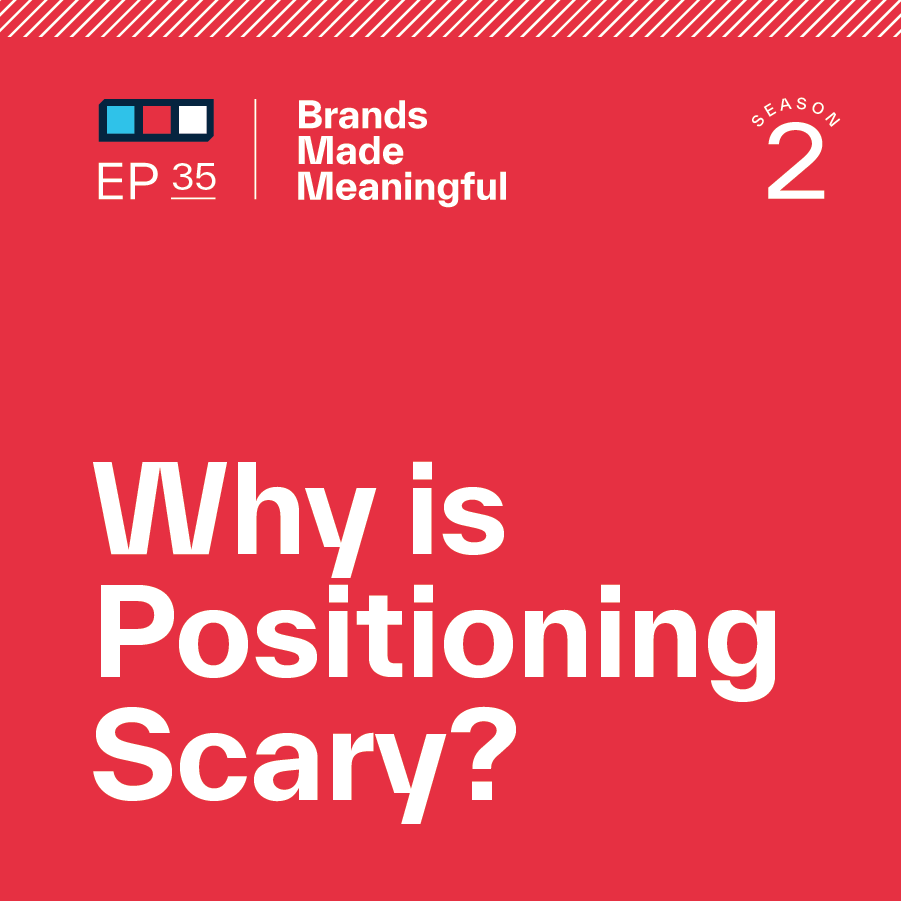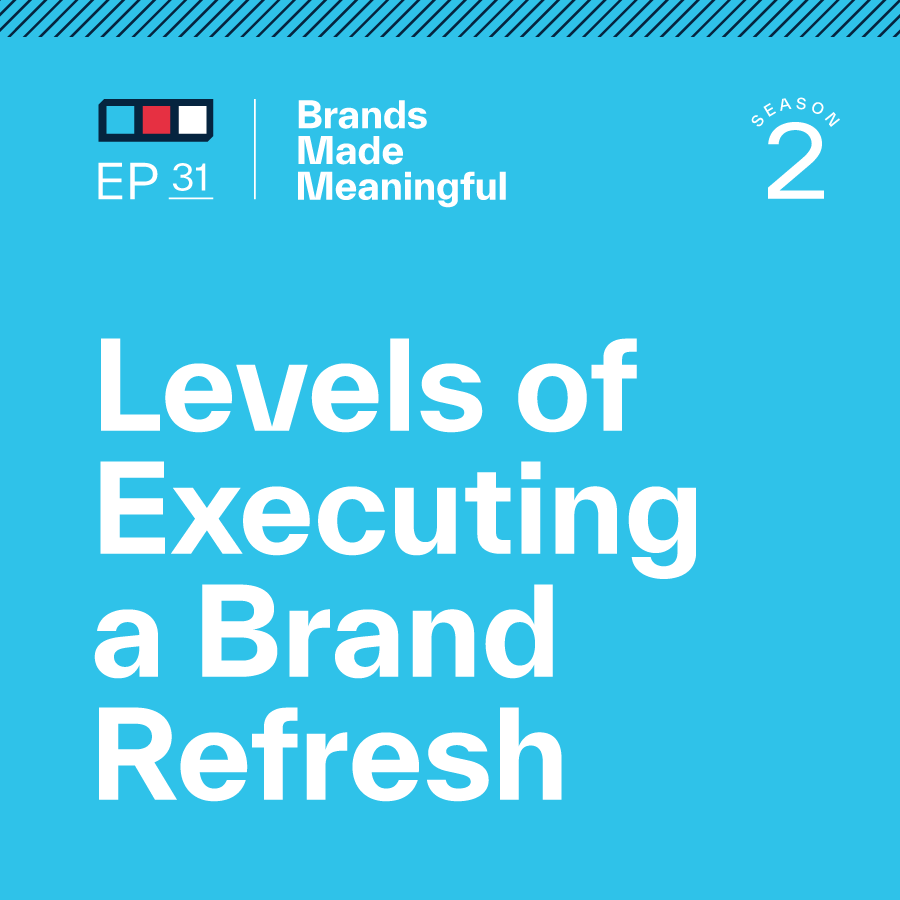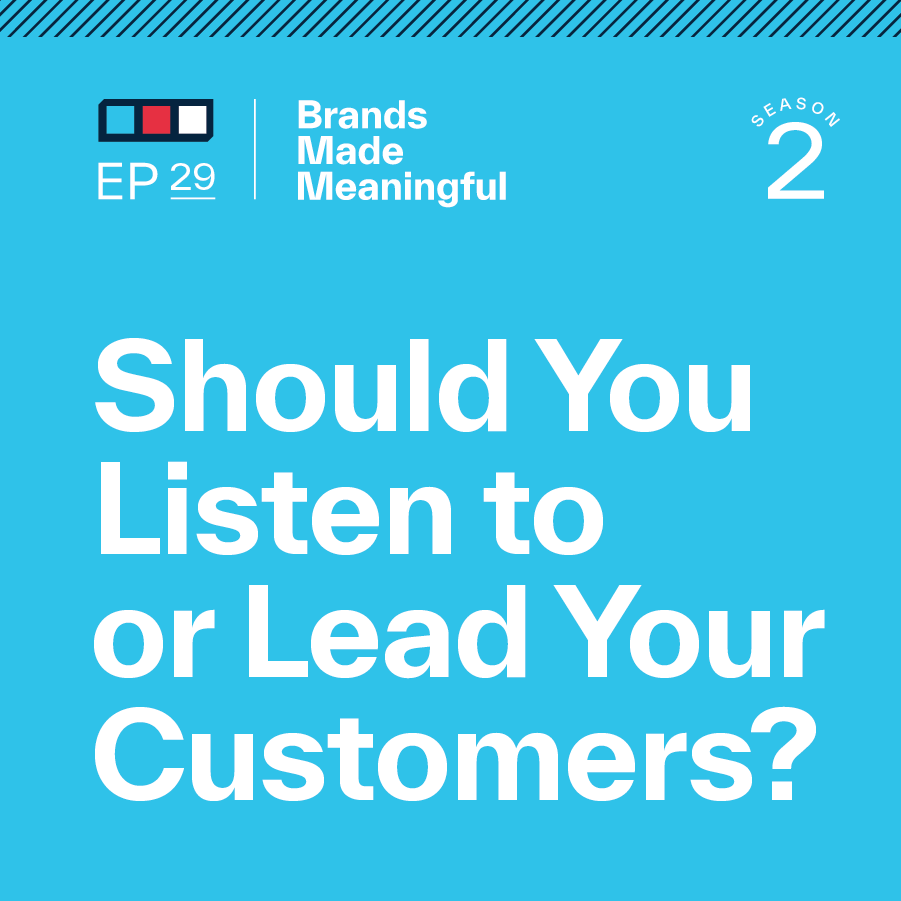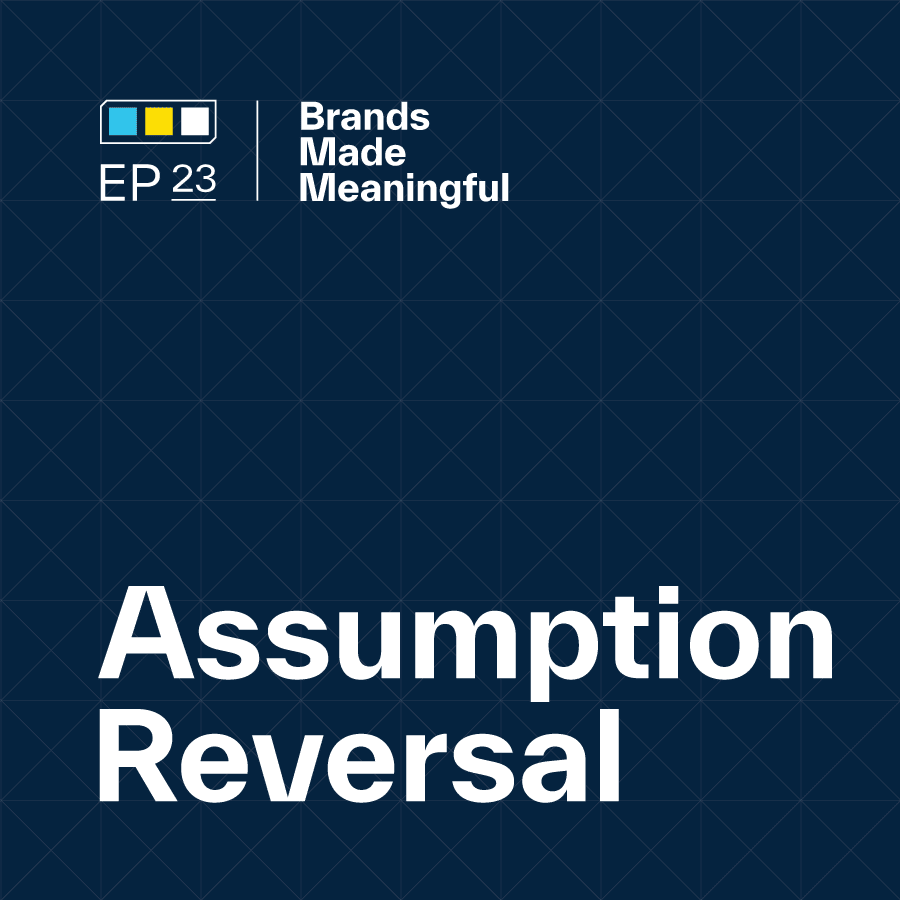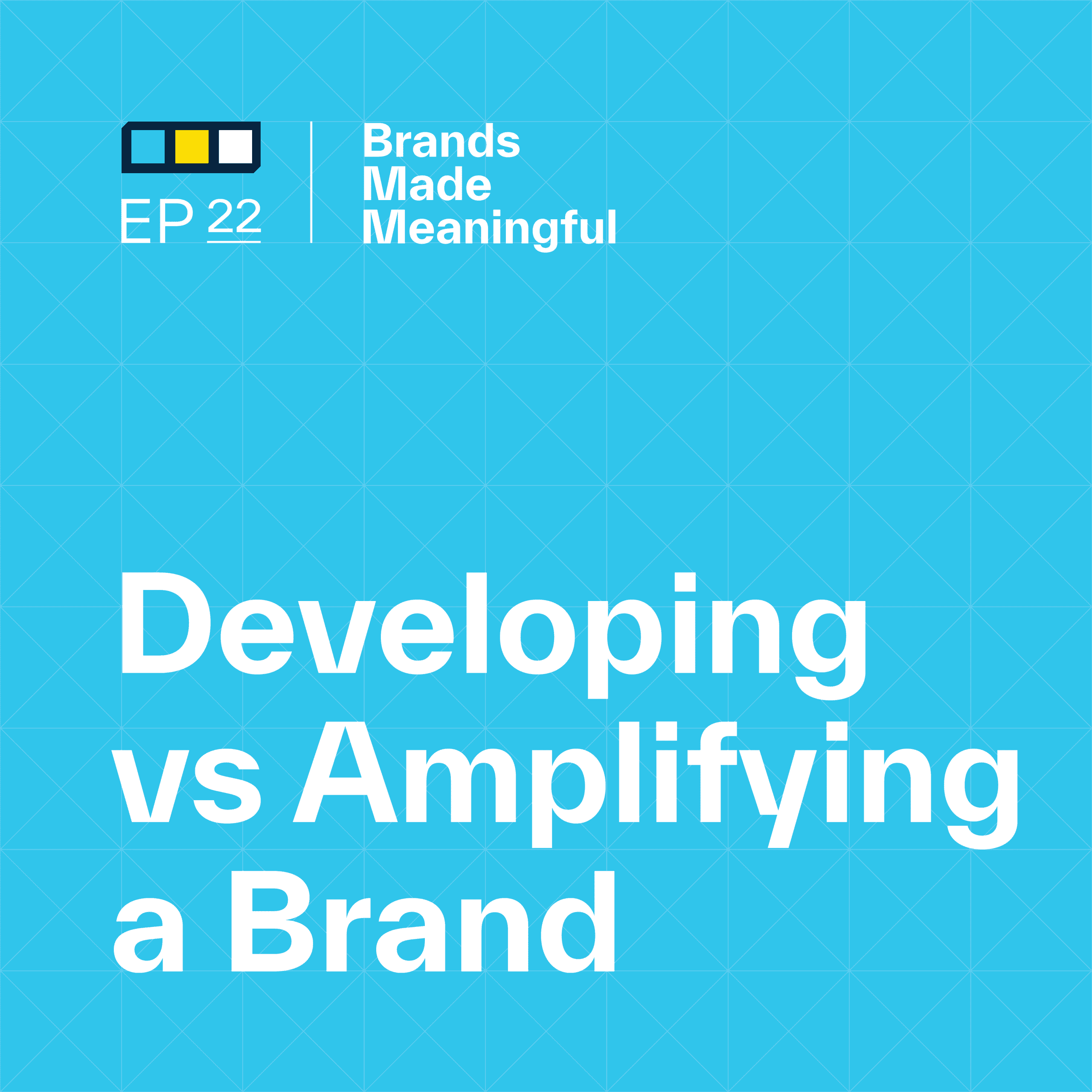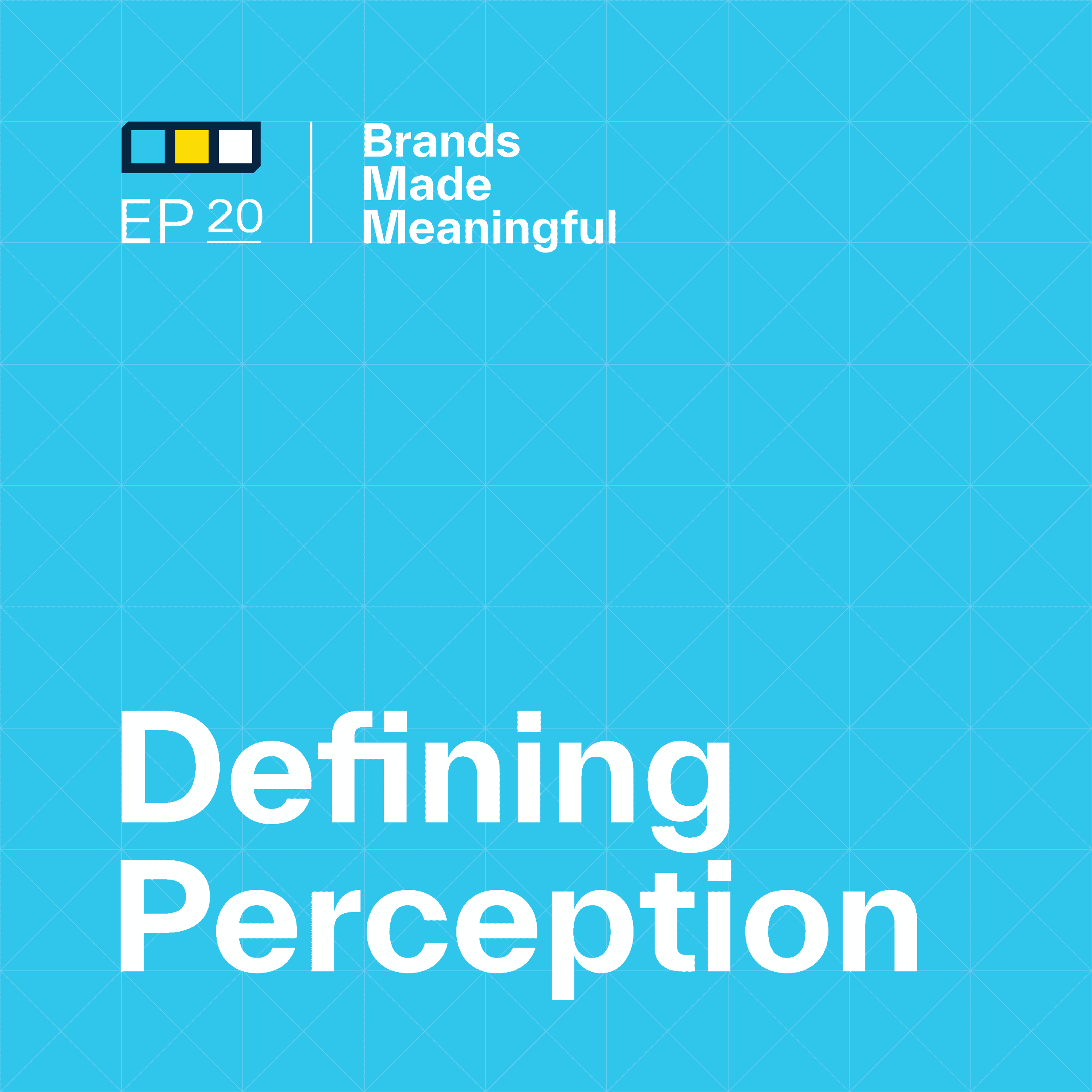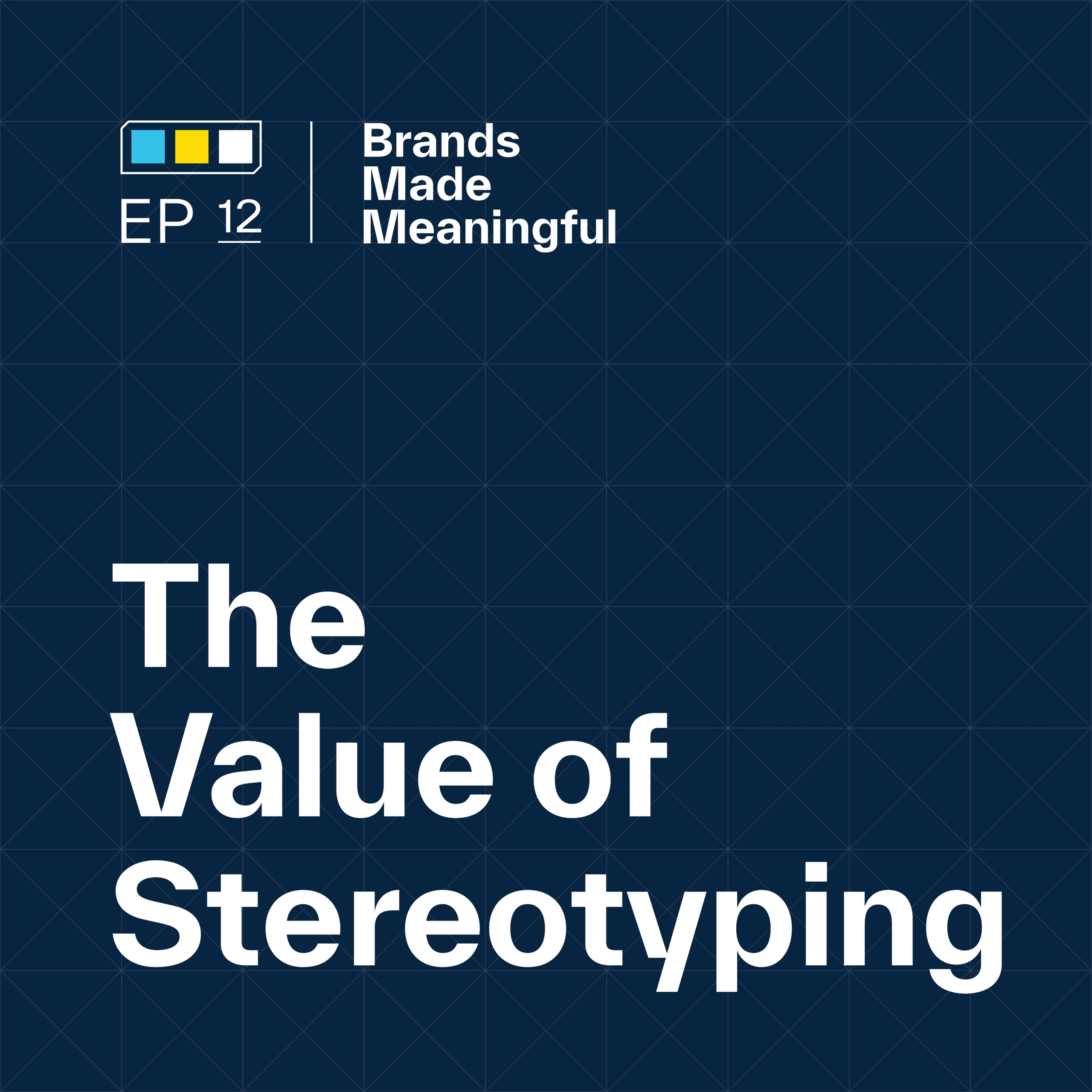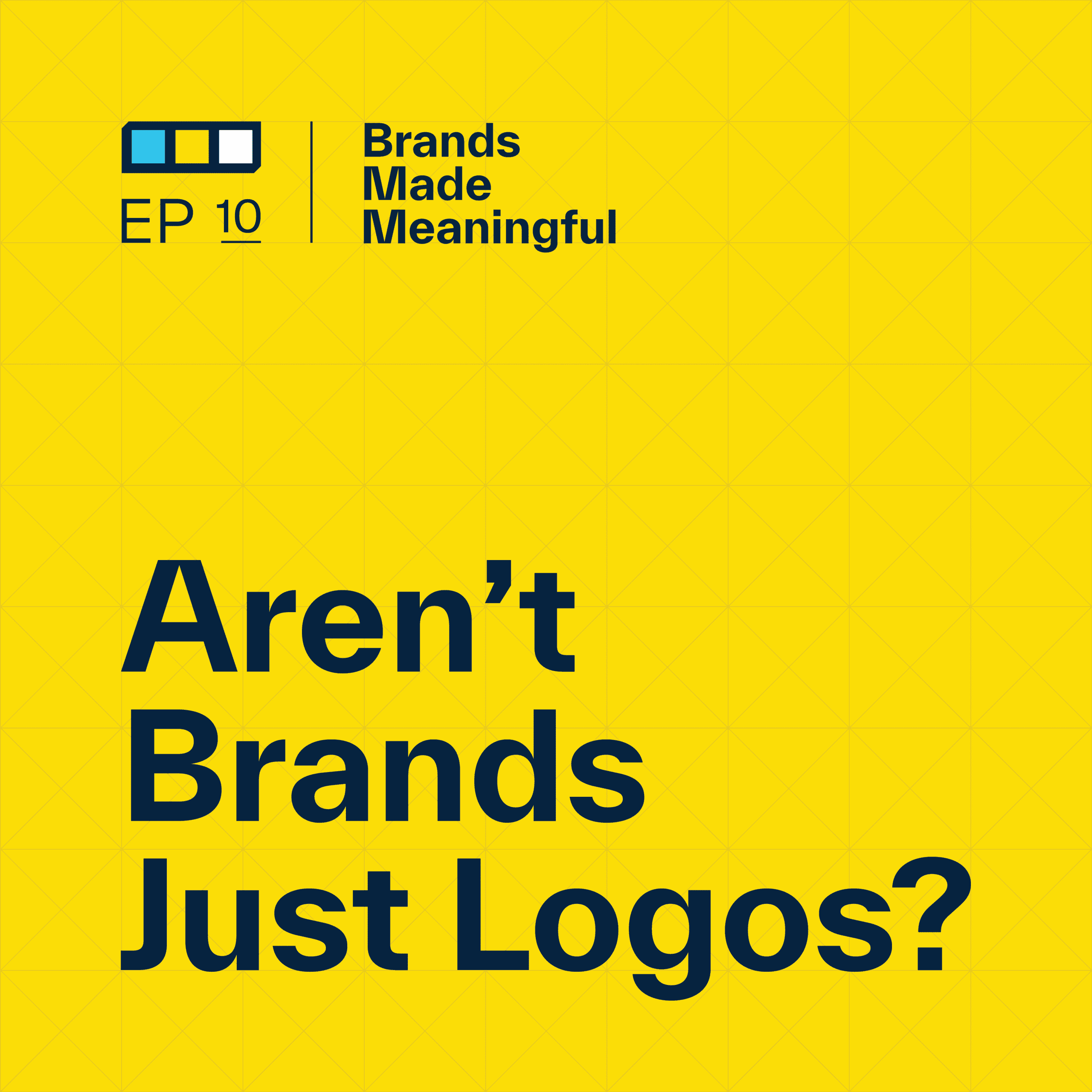EPISODE 40
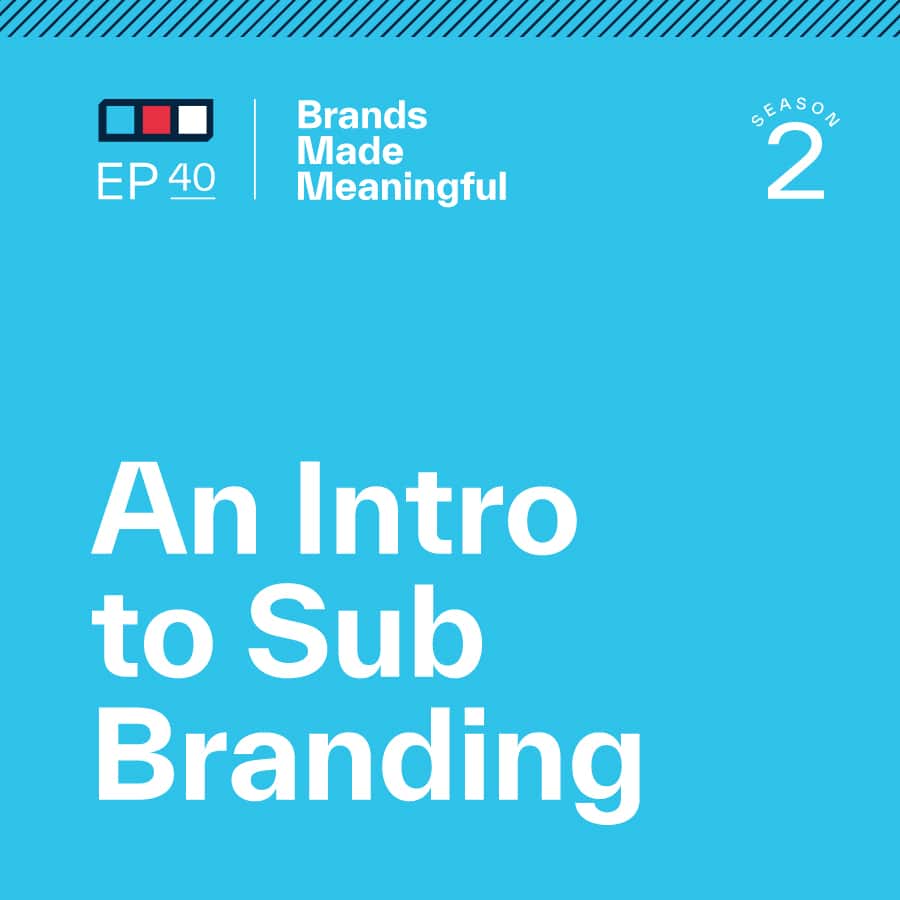
An Intro to Sub Branding
Episode 40
Derek and Tucker discuss the nuances of developing sub-branding and strategies.
EPISODE TRANSCRIPTION
It even gets more complex when you talk about adding sub-brands to that equation. But that’s what we’re talking about today.
Derek Layers and layers of brands and branding.
Tucker A couple of clients recently had the need to develop sub-brands, and that got us talking about how we need to know the difference between branding and sub-branding and the nuances when we get into the development process.
Expand Full Transcript
Tucker When we get into that process, it’s not starting from scratch because we’re starting from something, but it’s not the same as just being able to take that first brand and go, Okay, now it’s just this and it’s a smaller version of that.
Derek A lot of times the original brand isn’t necessarily created with that type of expansion in mind because when the business starts or when that product is launched, we haven’t necessarily already flushed out what the next product looks like or the next component of our business or brand looks like. With one of the projects that I’m sure we’ll probably talk about a little bit today, we were thinking about how that brand could have an extension. We were thinking about that at the beginning. It’s not until it actually becomes time for that to happen or time goes by and you’re working in your business, you’re launching, you’re growing and you’re just doing things, and then you pause, look back and say, Now I’ve got all these brands and product brands and sub-brands, and now what? How do I clean this up?
Tucker So what most companies get into is they have a master brand and that brand has been successful and great. But then when they keep going, it’s like, Wow, we could really talk to this one audience in a better way. That’s where a sub-brand comes in perfectly to say, We don’t have that story. We don’t have the right to win, necessarily, as a master brand, but we’re almost there. We just need a nuanced approach to it. That’s where a sub-brand comes in. I just want to define sub-brand. This is really an introduction to sub-branding or just sub-brands in general. So we’ll give you a definition, give you an example in the real world, maybe not one of our clients, but something that most people would know, and then get into what to watch out for when you’re going through that, the challenges that are there, and some things that people don’t keep in mind. And then we have some advice. If you’re moving down this path, if you’re going down the development route of a sub-brand, where do you start? Where do you start moving forward? And then how do you make sure that you’re not making the errors that we’ve seen in the past that lead to fragmentation and all these other challenging, complex words?
Derek Fragmentation, confusion, frustration?
Tucker Yeah, all the above. Really fun stuff. So sub-brand is defined, and I want to get a little technical at the beginning here and then we’ll wean off the technical speak. But from a brand side, a sub-brand is a distinct identifiable entity created within the architecture of a master brand. That sounds super exciting and fun, I know. But normally the brand has its own identity. And that’s how we feel about a sub-brand – normally it can have its own identity. It has its own messaging. Normally it has its own position that’s all related, stacked up, and has a strong connection to that parent brand. So that sub-brand is typically developed for a target audience or a target experience that you’re trying to create or maybe a specialized product, kind of like what you were talking about before.
Derek It’s Diet Coke.
Tucker That’s one good example.
Derek Coca-Cola is the master brand and Diet Coke is a sub-brand. It’s part of the brand, but it’s marketed differently. It’s branded differently. And like you said, it has a different audience than the audience that prefers Coke.
Tucker And the reason why a lot of these sub-brands come to life is because it allows that parent brand to expand its brand presence, and explore new opportunities within the market. It also helps deepen customer relationships with a specific target audience that you may feel like, Wow, we could really win them over, but we just don’t have the brand for it. That’s where a sub-brand would come in.
Derek Without diluting water or watering down the master brand. Instead of the parent brand saying, Okay, I now have to be for everybody, they can have the sub-brand that can be for that specific somebody.
Tucker So an example that I think resonates with us in the sports world is Jordan. So the brand Jordan is a Nike sub-brand. And it was really created for a lot of different things. Have you seen the movie Air? That’s a great example of them starting that conversation. But it really helps create a distinct sub-brand for Nike within the basketball space. So it helps them speak on footwear and apparel and accessories specifically for that target, and that gives them the right to win in that scenario. But it’s interesting because not only do they target basketball enthusiasts and footwear collectors offering these high-performance, but high-fashion shoes and all these other things, but they also are moving into other sports, which starts to become an interesting topic.
Derek It’s super interesting to see the Jordan Jumpman logo on football jerseys.
Tucker I was just going to get into that. I had to look up the date, but in 2016 the Michigan Wolverines actually came out with that and their Nike deal was a deal with Nike but on the basis of them being a Jordan brand. So that’s super interesting. You also see NFL players wearing football cleats that are Jordans. And you see it in golf, too, all the time. Whether it’s taking Jordans and then making them into golf shoes or just golf shoes that are made to be like Jordans.
Derek My son has Jordan golf shoes. Available in high-top or low-top.
Tucker But if you think about Jordan, some people might look at it and say, Well, that’s a Nike brand. But all other things point to it being its own brand. It has its own style. It has its own messaging the way it has marketing campaigns. I mean, it even has its own teams. Like we were talking about Michigan Wolverines. That’s a Jordan-branded team. It has its own players that are signed underneath that. The endorsements are different. Yet it’s all underneath the Nike umbrella.
Derek The nuance of that’s a little bit different than the Coke/Diet Coke example because, alongside Diet Coke, you might have Mello Yello and other Coca-Cola products like Dasani water. It’s more of a house of brands. We could talk house of brands, branded house, and a hybrid branding structure. But Jordan in many ways has come alongside Nike. It’s a choice. You’re either a Coke or Diet Coke or Cherry Coke, but Nike or Jordan, when it comes to a customer choosing, that’s a little bit of a different type of brand architecture.
Tucker So when we get into the architecture component, we’re not going to get deep into that today because this is more of an introduction, but it’s a really interesting conversation to say, Who are we speaking to and how does that differ? So the Nike brand itself doesn’t want to water down its own messaging and do all of its own brand marketing towards just this audience. So it’s going to build out this sub-brand that helps them do that in a really unique and nuanced way. That also helps them do a couple of things so they can leverage the processes that they’ve put in. They can leverage their marketability and they can leverage all of those to get into the places they want. And then they’re also leveraging that on Michael Jordan’s legacy. They’re leveraging his personality, his accomplishments, and all those other things. That helps them really get into this unique realm of their brand. They help grow the Nike brand so they’re not only out there growing their own brand, but they’re growing that Nike brand, too. So that example, I think, helps us lead into the challenges. What are the things that people need to watch out for? If I was going to go out there and we had a master brand and I said, We’re going to create a sub-brand for a different audience with maybe our same offering, what are the things that we need to start looking at?
Derek The first one is the one you just touched on. It’s diluting or causing confusion within the core or the master primary brand. When I first saw the Jordan brand and it was on a Michigan Wolverines football jersey, my immediate reaction was, What’s going on? I don’t understand. Why would I buy a basketball-branded product for my football brand? That’s a football fan coming in at it from a fresh perspective. And I think that they’ve done a lot of great work in clarifying those questions. But right out of the gate, that was my first concern when I saw it as stealing from the Nike brand and now selling this brand.
Tucker That dilution of the core brand can be really tricky. There’s a lot of this. If we go too far down this sub-brand route and we hurt the overall master brand, that can really hurt our brand equity within spaces that are already really strong. But for others that can help you differentiate yourself. So that there’s a fine line between diluting the core brand or supporting it in a new way.
Derek Back to the Nike example, my guess is that for them to have been able to do this successfully, the foundation of the organization or the foundation of the Nike North Star needed to be really strong and consistent or they risked chaos. There has to be alignment. I think the perception of one brand versus the other can be different. The target audience and what each of those audiences wants are different, the offerings are different. But I think there’s got to be a commonality in the core values that they stand for.
Tucker And that commonality, that’s where the Nike core brand has to be really strong, big, bold, ambitious, but not too specific. So these big brands, if they get really specific, it makes them hard in the future to have sub-brands that make sense within that brand. So when we look into how we strike that balance, you’re really going to be talking about individuality. Is it really important? But it’s always tying back to the core pieces of that master brand that keep you relevant, that keep you in play for a lot of these brands. The second one is confusion and fragmentation. So you kind of touched on this at the very beginning of the conversation, but we have worked with brands that have lots of sub-brands and it starts becoming confusing or what we call fragmented. So it feels like they’re just everywhere. They’re not made. It’s not an ecosystem. It’s more like they’re just their own thing.
Derek I love the word ecosystem. I like ecosystem better than architecture because ecosystem is a little bit more fluid and can adapt as needed. But to have clarity in what belongs where, what’s different from which, what’s supportive and what’s competitive, and to make sure, especially internally within the organization that’s managing these brands, that there’s real clarity in understanding the whole ecosystem and what goes where and why.
Tucker You don’t want to steal customers from yourself. That’s where it gets into if we want to have a sub-brand, but our sub-brand has to be different enough that it’s speaking to a new customer that we don’t have access to right now, it can’t be something that we’re just interested in. And it will take our current market share and actually divide it.
Derek You were talking football or shoes or footwear, Converse and Chuck Taylor, the all-stars. It’s another, I think, pretty good example of somebody who has clarified the difference between anything that’s branded Converse and something that’s branded with the star on the side and the circle. They do a pretty good job. That brand seems to be growing and doing things. It’s gone a long way from, I don’t know, the 1960s and the old canvas shoe.
Tucker Whenever you were a kid.
Derek Chuck Taylor himself was actually at the peak performance of his time. But just like Jordan, that thing has become its own brand and it’s now standing for its own thing.
Tucker The third one that we see a lot of people slip up on is resource allocation. So building out a sub-brand takes time, it takes effort, it takes a lot of resources, and that might mean money and that might just mean people’s focus. We’ve worked with companies before where this fragmentation really comes from resource allocation. They just didn’t give that sub-brand what it needed to grow because it takes a lot. Think about developing a brand new brand in general – that takes a lot of effort in itself. But now you have more rules, you’re more nuanced. You have to guide it so it’s not eating your market share and helping you grow it in a different way. There’s a lot that goes into it. And the people who don’t have the resource allocation right can really fall victim to just wanting to be ambitious without a plan to follow that up.
Derek I don’t want to oversimplify it, but it’s kind of like having multiple children. Each of these are individuals. They each have their own needs, wants, and personalities. Some play a certain sport. Somebody else is interested in a different type of activity. And me, as a parent, now has to figure out how to divide my time, divide my money, what costs what, and where I put that attention so that each individual has the opportunity to get the attention and the nourishment that they need to be healthy and successful.
Tucker You’re never supposed to love one kid over another.
Derek Of course not. But in the business stance, that gets more confusing if one of those children is bringing in more revenue.
Tucker Exactly.
Derek Or has more opportunity or is thriving in certain ways.
Tucker Well, that’s life.
Derek It’s life in brand management. Think about the people inside companies like General Mills that oversee teams of people and where each of the brands within that organization has an entire team dedicated to that brand. But then somewhere in that internal personnel hierarchy, their own ecosystem is figuring out how to nurture and manage all that. It’s something.
Tucker It’s complicated. We were on a call yesterday and a client said, And that’s the difference between branding and just throwing up new graphics for something. It’s a commercial challenge. There’s a lot more to it than just if this looks like that brand or sounds like it’s close to that brand. There’s a lot that goes into it.
Derek If there was a sporting goods brand thinking about either changing a current product that they have into its own brand or adding a new brand, what’s some advice that we would give to that organization so that they made that process as successful as possible from the get-go?
Tucker Number one is a clear purpose. The purpose is to define the goals of the brand. What are you trying to do? I’m not necessarily saying the aspirational purpose of the storyline or anything like that, but the objective. What is the objective here? If you can define a clear objective, a clear purpose for this brand, that goes a long way to understanding it, to keep coming back to it and going, Okay, are we doing that? In one or two years once we’ve launched this brand, is it doing what it set out to do or has that changed? And is our purpose different for it?
Derek Starting out with, Why are we doing this? Why is this? Why? I mean, it sounds pretty simple. But the answer to that question and the clarity upfront to ultimately decide what success looks like for the reason that we’re doing this really helps make the next couple of decisions easier.
Tucker And keep coming back to it. The second one is consistency within the core beliefs of the master brand. Before you get too far down your road with developing a sub-brand, really understand the master brand. Really understand the beliefs that it has, the core principles, and the guiding principles of our vision and our mission. What are we trying to do? What’s the personality we’re trying to create? What’s our strategy around all these different things? What story are we trying to tell? And then pull those and say, What’s relevant for us? What could we do as a sub-brand with what’s there right now? What can we pull? Instead of starting from a blank page, start from what makes sense to this new audience. What are we trying to communicate and what are we already communicating with our master brand?
Derek When we were working with United Sports Brands, they had, at the time, five sub-brands and we had the opportunity to work with each of those. But there were absolutely commonalities in the organizational-wide core beliefs. That was clearly established and it was on the walls of their organization. And that absolutely permeated down into each one of those specific sports brands. But then each one of those, just like your children, has their own personality and an audience that they’re going after. So there was that ability to customize them and make them relevant for their specific audience, but they always had the core beliefs to anchor themselves.
Tucker Think about a family. When you have a family, your family generally has core beliefs. But to your point, each child or parent or whoever has their own set of personality traits. They also look different. They have different styles, but they kind of come back to that same root system of, Here’s what we believe and this is what we’re rooted in. The next one is targeted market research. We’ve seen people do things, and this wouldn’t be surprising to anyone who listens to this podcast, but we’ve seen people build out sub-brands without fully understanding the audience that they’re building that for and that’s not good in branding in general and in sub-branding, that’s where you start seeing red flags all over the place.
Derek We’ve been watching this survival show on TV, I think it’s called Outlast. In one of the challenges these people are navigating by Compass through this super thick forest, and from up above, producers of the show can tell that they’re on track. And then along the way, they got just a little bit disoriented, and the marker that they were navigating towards shifted by like a degree, and they ended up missing their target by miles and ended up losing the challenge. So my point is that the clarity of where we going, not that that doesn’t change and evolve over time through the research that you find, but not having that guide to guide you, it gets really easy to go sideways.
Tucker And that’s that market research to come back to and say, This is what people said, this is what they want. We did an episode a while back that’s like, do you listen or do you lead your customers? That’s a great episode to talk about when you say, I’m doing market research, but I just don’t think that they know what I’m going to offer. They don’t know what they don’t know yet, but there is value in listening to them and hearing what they have to say before you go down the path of maybe a sub-brand doesn’t work for them. Maybe they already feel like your brand speaks to them perfectly. Your master brand does, and that’s where you will save yourself time, effort, money, and all those great things with just doing a little bit of research.
Derek What’s next?
Tucker Developing an integrated brand strategy means looking at all of your assets and developing a strategy that can be plugged in or plugged underneath that master brand strategy.
Derek So, specifically, we’re talking about creative.
Tucker So it’s developing visual assets and verbal assets. For new people here, it would be like it needs to look like it’s a part of this if that’s appropriate. But developing a brand strategy in developing brand assets, can really help you either differentiate where you need to differentiate from the master brand or connect where you need to connect. So that’s why it’s integrated – this idea of needing to work with the master brand versus working completely against it.
Derek This could be as specific as colors that tie or complement each other or fonts or symbols, or it could be language, or it could even be the tone and attitude of the way that different languages are created.
Tucker All of those examples are something that we’ve done with clients in the past. There’s been plenty of times when we say, Okay, we’re going to build this sub-brand out and it needs to connect somehow. How does it connect? Maybe it’s within style, so it leads to that same style but tells a completely different story. That makes sense for them because they need cohesion within their brands or else it gets way out of whack. That’s where the brand strategy is going to help. You know your team, you know what you’re good at. You also know what you can and cannot tell when it comes to storytelling for your clients, for your respective customers. That’s going to help you develop something that’s meaningful and not confusing.
Derek When I think of the word strategy which we use all the time and in different ways, for us, it’s being thoughtful, intentional, and meaningful. It’s establishing a plan and then working towards that plan and then adjusting as we need to. So being strategic isn’t being reactionary, it’s being proactive.
Tucker And from brand strategy, what we’re really talking about is being authentic to the master brand in some way, shape, or form, authentic to those core beliefs. It’s being relevant to the audience that we’re trying to speak to and why we are trying to speak to them. And then it’s surprising to say that we are a sub-brand of this master brand, but we’re not the same. Just like the child example. It’s like every kid has their own personality. He or she should then use that personality to sell themselves in a unique way. The last one for our advice is resource allocation strategy. So this goes all the way back to the last part of what challenges we see, and that’s resource allocation problems. You should really have an organizational strategy to say, here is how we’re going to roll this out over the next three years. Here’s how we’re going to develop it and this is what we’re trying to introduce to our internal teams. Here’s what that means when we roll that out to our customers. And then here’s what it means two or three years afterward to say we’re willing to invest this much in it. And this is what we’ll see. If we don’t see these markers, then we know that we’re off track.
Derek And to be thinking about those markers both in the short term and in the long term. We don’t quite know what the long term is going to look like right out of the gate. But I think if we plan for what we want that to be and what that could be, there’s also the short term of us needing to either get this off the ground, get it started, get it financed, get it built, and then making sure that we’re thinking long term, even though I think a lot of times when sub-brands fail, it’s because they’re living only in the short term and they’re not understanding the short term bumps in the road or what people might perceive as failures are just learning opportunities for ultimately what still could be successful in the long term.
Tucker Sometimes it helps for you to zoom out as well. If you have multiple sub-brands, it wouldn’t hurt to do a yearly check-in on what that ecosystem looks like. We have these sub-brands, here’s how they’re doing, here’s how they’re marketing. Make sure they’re not eating out each other’s marketing budgets. But also make sure that they’re not carving into any other markets that they shouldn’t be in because that happens a lot where sub-brands get out of their own kind of realm, their category.
Derek They evolve. They’re living entities. It’s an ecosystem. That’s why I like the word ecosystem. They’re living, growing, breathing brands. They are these alive, active things if you’re taking care of them. And as they evolve to step back. I love doing it whether it’s annually or semiannually – to look back at all of your brands and to see what’s changed and what’s the same and to think about the relationship. Some people can look at it in a flowchart. Some people can think about if this was a family, what are they? Are they cousins? Are they siblings? Are they neighbors? To think about them in terms of some almost human traits lets us get some clarity on those relationships.
Tucker Closing statements, closing arguments, big takeaways.
Derek Sub-branding, I think, can be incredibly helpful and successful when the opportunity is right and if it’s done thoughtfully and intentionally If you don’t do it thoughtfully and intentionally and you’re too focused in the short term, you’re setting yourself up for a lot of frustration.
Tucker It’s difficult. This is not an easy topic. This would not be the beginner course of branding, would be sub-branding. That is not where we’re at. If you have the ability to build out a sub-brand, it’s asking those critical questions. Understand your master brand. If you don’t have a good grasp on who you are today and who your master brand is, it’s going to be really hard for you to develop something meaningful, clear, and easily growable within that marketplace.
Derek I think you need to be incredibly protective of that master brand. If you’re creating a sub-brand because of a specific opportunity, but the master brand is still viable and healthy, then you’re not rebranding. You’re not rebranding the master brand into a sub-brand. You have a separate opportunity. Don’t dilute the master brand because that’s what probably got you to this opportunity in the first place.
Tucker All right. Until next time. If you have questions or anything, reach out. Thanks for listening.
Derek Thanks for tuning in. Sussner is a branding firm specializing in helping companies make a meaningful mark, guiding marketing leaders working to make their brand communicate better, stand out, and engage audiences to grow their business. For more, visit Sussner.com.
More Episodes Like This
Reclaiming Reputation Through Brand RevitalizationEpisode 85
Derek and Tucker discuss the potential that a branding initiative can have to restore a club’s reputation.
Branding The Club with Don KovacovichEpisode 84
Don Kovacovich, GM of The Club at Golden Valley, joins Derek & Tucker to discuss the impact that rebranding has had on his club and the opportunity it presents for other clubs
Changing a Club’s Membership ModelEpisode 83
Derek and Tucker discuss key considerations and challenges when changing your club’s membership model.
Connecting a Club with its Story with Jackie CarpenterEpisode 82
Derek and Tucker are joined today by Jackie Carpenter, author of People First.
Branding a Club AnniversaryEpisode 81
Derek and Tucker discuss the unique opportunity presented by milestone and anniversary dates for private clubs.
Private Club Storytelling with Ricky L. Potts, Jr., CCMEpisode 80
Derek and Tucker have the pleasure to speak with Ricky L. Potts Jr. about how powerful storytelling can be for your club members.
Opportunity in Club Facility RenovationEpisode 79
Derek and Tucker discuss pivotal key moments in your legacy and how to transform your story through renovation.
The Evolution of Club Members with Jon LastEpisode 78
Derek and Tucker are joined by Jon Last from Sports & Leisure Research Group to discuss the evolution of club members.
Member Branding vs. Product BrandingEpisode 77
Derek and Tucker discuss the challenges their client's have moved through when approaching differing styles of branding.
The Role of a Private Club's LogoEpisode 76
Derek and Tucker take a look back on private club logos they've designed over the years and explain the strategic reasons behind their choices.
Club Brand GovernanceEpisode 75
Derek and Tucker divulge the steps to evolving your brand while retaining your core values.
Seasonal Member MerchandiseEpisode 74
Derek and Tucker take a look at crafting specific merch to celebrate landmarks and special times of the year.
Who is Sussner?Episode 73
Derek and Tucker take a break from talking shop to talk about who they are and what they stand for.
Club Identities Beyond AmenitiesEpisode 72
Derek and Tucker discuss what it takes to stand out in unique ways for your club.
Little Things Mean EverythingEpisode 71
Derek and Tucker take a look at the often missed and easy to overlook.
Build Flexible Brand SystemsEpisode 70
Derek and Tucker break down the building blocks for long lasting branding.
The Club at Golden ValleyEpisode 69
Derek and Tucker take a close look at one of their recent rebrands.
When to Launch a Club RebrandEpisode 68
Derek and Tucker break down how to find the perfect timing when launching a club rebrand.
Steps to Launching a Club RebrandEpisode 67
Derek and Tucker break down the steps to take and the reasons why you should consider a club rebranding.
Brand Marketing vs. Brand DesignEpisode 66
Derek and Tucker define the line between marketing and design and how they intersect to inform one another.
Building Brand GuidelinesEpisode 65
Derek and Tucker show us how to build infrastructure guidelines to unify your brand experience across the board.
Club Identity SystemsEpisode 64
Derek and Tucker cover what Identity Systems entail and how to discern between internal and external methodologies.
Navigating Branding With a BoardEpisode 63
Derek and Tucker bring clarity to uniting your company under one cohesive vision.
Putting a Committee TogetherEpisode 62
Derek and Tucker assemble your need-to-know facts when putting together your committee.
The Guiding Principles of Private ClubsEpisode 61
Derek and Tucker go over the top ways private clubs can find the balance between pleasing old members while attracting new ones, all while making moves towards the future.
How Color Affects PerceptionEpisode 60
Derek and Tucker cover how to best convey your business with color.
Brand EcosystemsEpisode 59
Derek and Tucker break down how to craft effortless experiences when considering your brand as a whole.
6 Types of Brand TransformationEpisode 58
Derek and Tucker dive into 6 distinct types of transformations for a wide range of brands.
Tournament Branding For ClubsEpisode 57
Derek and Tucker discuss designing and delighting your club members with tailored events.
Brand Promoters & DetractorsEpisode 56
Derek and Tucker discuss how high level promoters increase your NPS and how to turn the tides on your detractors.
The Loudest Voices in the RoomEpisode 55
Derek and Tucker talk about gathering feedback while prioritizing every voice.
Determining A Primary AudienceEpisode 54
Derek and Tucker discuss if and when you should be honing in on your audience vs. casting as wide a net as possible.
Branding For ExclusivityEpisode 53
Derek and Tucker discuss the intricate process of naming your brand.
Measuring Brand SuccessEpisode 52
Derek and Tucker discuss how we measure our success in branding and a few key KPIs that help us understand our impact.
Branding For ExclusivityEpisode 51
Derek and Tucker breakdown how brands can create the perception that they are exclusive and only for a certain type of consumer.
What Makes A Brand SurprisingEpisode 50
Derek and Tucker break down the Sussner formula that we believe leads to a surprising brand.
Breathe Life Into Brand TraditionEpisode 49
Derek and Tucker discuss the intricacies and common pitfalls of branding for Private Golf Clubs.
They Key of Visual DifferentiationEpisode 48
Derek and Tucker break down the importance of differentiating your brand on a visual level.
Branding For Private GolfEpisode 47
Derek and Tucker discuss the intricacies and common pitfalls of branding for Private Golf Clubs.
Dealing With An Identity CrisisEpisode 46
Derek and Tucker breakdown how to identify and remedy a brand's identity crisis throughout thoughtful and intentional brand management.
Branding vs MarketingEpisode 45
Derek and Tucker discuss the differences between Branding and Marketing and how to make the two compliment each other.
Build Your Brand's FoundationEpisode 44
A brand's foundation is a critical element in being successful in the long-term.
Building a Constructive Branding ProcessEpisode 43
Derek and Tucker break down the steps required to build the most constructive and meaningful branding process.
What Makes a Brand Relevant?Episode 42
Relevance is a key piece of a brand's identity for creating clarity and connection.
Your Right to WinEpisode 41
Derek and Tucker discuss the “Right to Win” and the odds of your brand's success within your target market.
An Intro to Sub BrandingEpisode 40
Derek and Tucker discuss the nuances of developing sub-branding and strategies.
Conquer Branding FearsEpisode 39
Derek and Tucker dive into how to overcome the fear of change and the nature of constant refinement of your brand.
Balancing Strategy & DesignEpisode 38
Great strategy is a necessary foundation for great design—and great design brings great strategy to life.
Branding PrioritiesEpisode 37
Branding priorities are the actions and initiatives that shape or enhance a brand's identity, perception, and market position.
Invest in Your BrandEpisode 36
Investing in your brand benefits your company as a competitor in the marketplace, builds trust with customers, increases perception of quality, and drives employee engagement.
Why is Positioning Scary?Episode 35
Narrowing the brand's position is really a strategic decision to focus the brand's offerings, messaging and target audience on a specific niche or segment within the market.
What Are Brand Consultants?Episode 34
Derek and Tucker discuss the importance of hiring expertise with a wider breadth of knowledge than just visuals.
Hire for Brand FitEpisode 33
Hiring people that fit your brand is key in order to maintain brand authenticity, positive culture, and consistent messaging.
Your Brand’s Stance MattersEpisode 32
Your stance can help define your brand from a core level and make branding, hiring, and marketing not only easier, but more meaningful.
Levels of Executing a Brand RefreshEpisode 31
If you have a brand strategy in place, how do you execute it?
The Role of Features & BenefitsEpisode 30
Derek and Tucker discuss the importance of features and benefits within the context of branding, selling, and marketing your products and services.
Should You Listen To or Lead Your Customers?Episode 29
Within the challenge of any rebrand is the challenge of managing customers' perception of change.
Managing a Brand TransformationEpisode 28
Episode 28 discusses the highlights and challenges of rolling out a new brand, both internally and externally.
Living Your BrandEpisode 27
Your brand is not this shiny trophy on the shelf. It is something that you are molding every single day.
What Makes a Brand Authentic?Episode 26
Season 2 starts off with a discussion about building authentic brand experiences, both internally and externally.
Reviewing your Competition's CreativeEpisode 25
Derek and Tucker discuss the process of reviewing your competitors' creative strategy to better position your brand within the market.
Interviewing your Audience for InsightsEpisode 24
This episode details the process and benefits of interviewing your audience as part of the branding process.
Assumption ReversalEpisode 23
Derek and Tucker discuss how we change our thoughts and get into a different mindset to refine and revise our branding.
Developing vs. Amplifying a BrandEpisode 22
Another way to say it is, development is building and crafting your brand story, and amplification is then telling it.
Refreshing a Sporting Goods BrandEpisode 21
This episode shares the steps behind Sussner’s work in refining the Shock Doctor brand.
Defining PerceptionEpisode 20
Derek and Tucker discuss the positive and negative impacts of brand perception.
What is a Brand?Episode 19
Derek and Tucker discuss what defines a brand and what makes them successful.
Branding Golf Courses vs Golf ClubsEpisode 18
Derek and Tucker further hone in on golf course design.
Refreshing a Golf CourseEpisode 17
Derek and Tucker discuss the bar for golf course design – and how to push past it.
Let’s Talk Taglines Episode 16
Derek and Tucker talk taglines in today's episode.
Refreshing an Athletic DepartmentEpisode 15
Derek and Tucker sit down today to discuss what logos mean within branding.
Branding a Club Episode 14
Derek and Tucker discuss how to brainstorm branding a club.
An Intro to Internal Branding Episode 13
Derek and Tucker discuss the power behind internal branding.
The Value of Stereotyping Episode 12
Derek and Tucker sit down today to discuss the meaning of stereotyping within the branding world.
We’re on a Mission Episode 11
This episode digs into the rallying cry for the greatness your team is going to accomplish.
Aren’t Brands Just Logos? Episode 10
Derek and Tucker sit down today to discuss what logos mean within branding.
The Business You Are Really In Episode 09
Derek and Tucker sit down today to discuss how to discover what business you are really in to better understand your mission statement.
Clarity of Vision Episode 08
Derek and Tucker discuss the importance of looking ahead towards the big picture to better hone the purpose behind what we do in the now.
Branding B-2-B Environments Episode 07
Derek and Tucker discuss the Branding of Spaces.
It’s All in the Name Episode 06
Derek and Tucker discuss what a name can say - and not - about your company.
Delving Into Branding Data Episode 05
Derek and Tucker jump into the discovery phase of branding before it hits the drawing board.
Content Made Meaningful Episode 04
Today Derek and Tucker discuss the concepts within content and its common misconceptions such as the phrase "Content is King."
Brand Story vs. Brand Messaging Episode 03
Your story matters.
Visuals That Take The Cake Episode 02
Derek and Tucker sit down to discuss visual impact and what that could mean for your brand.
Are You Different or Distinct? Episode 01
It's not about being the only option, it's about being the right option. Join Derek and Tucker as they discuss Differentiation & Distinction.



